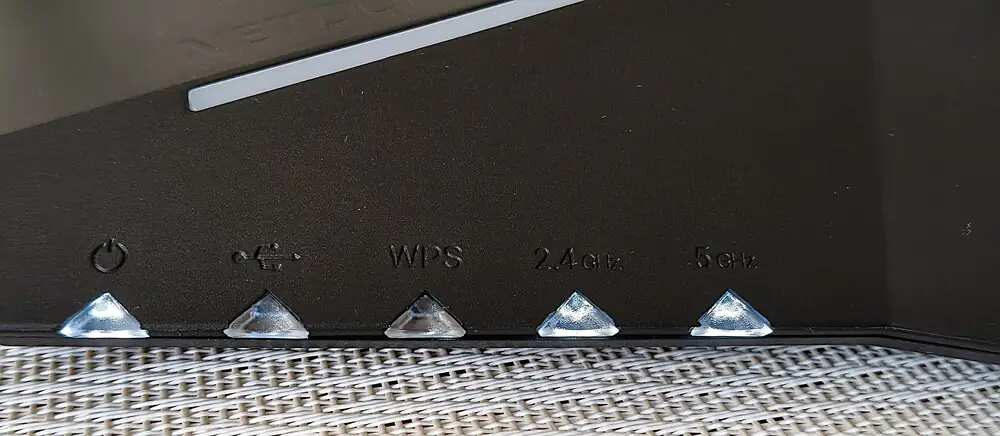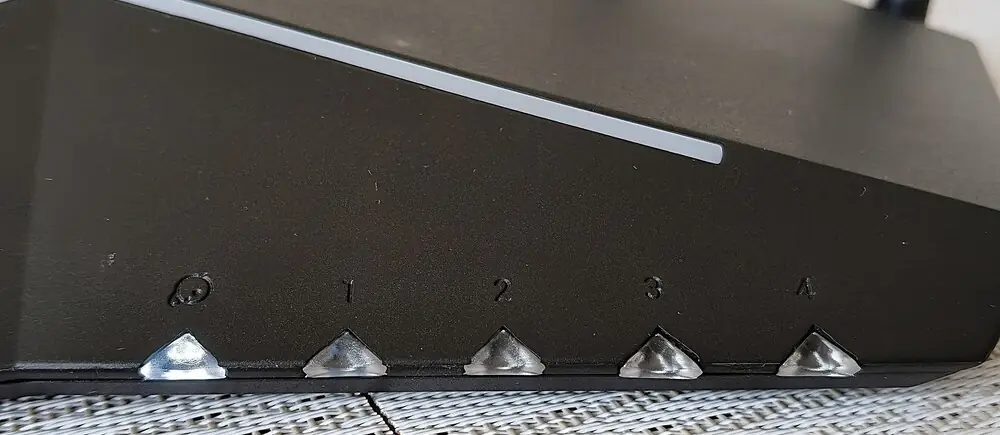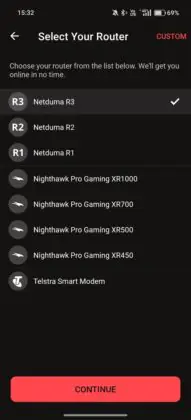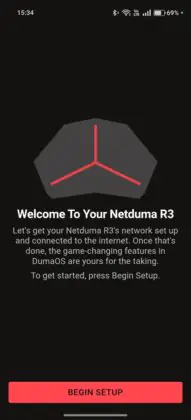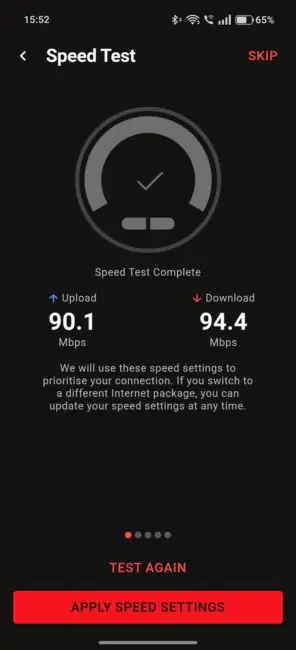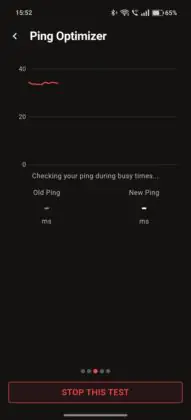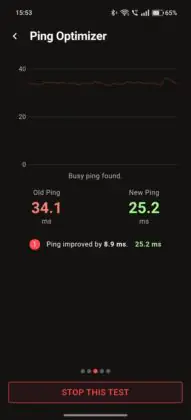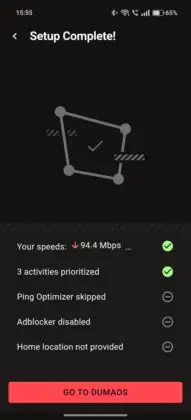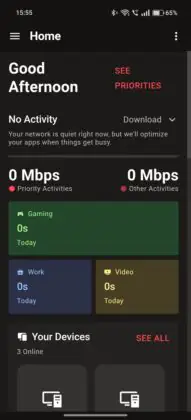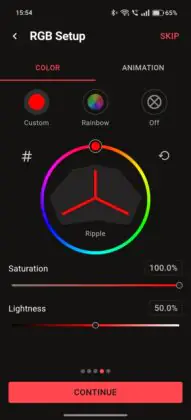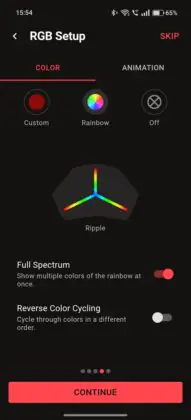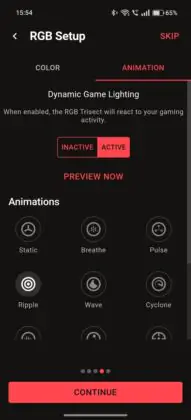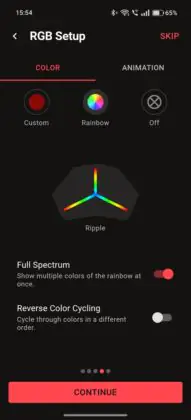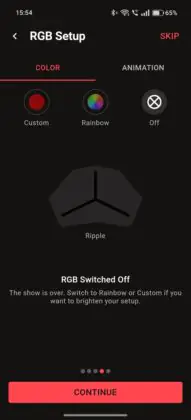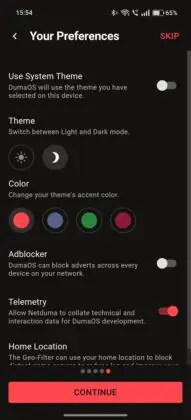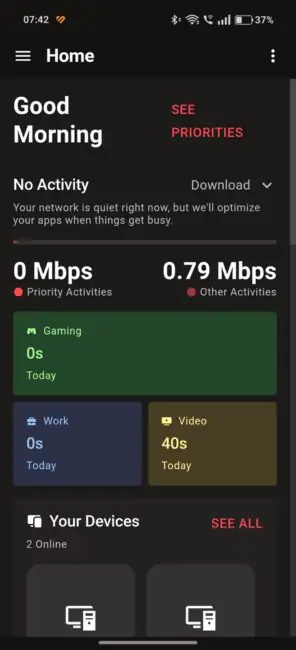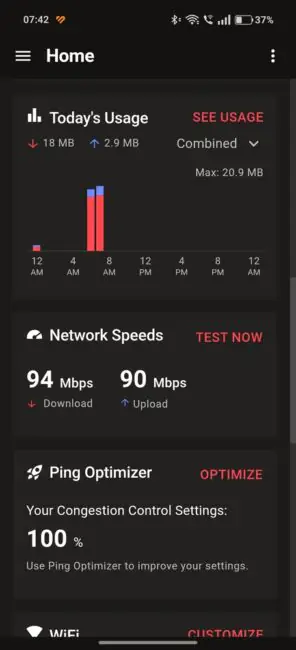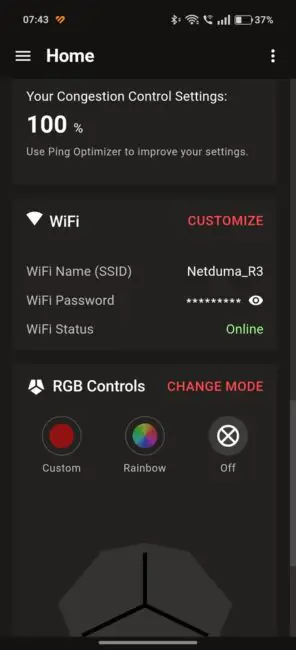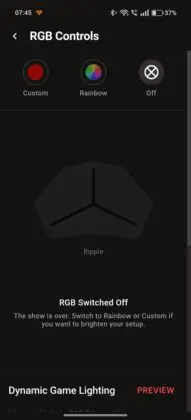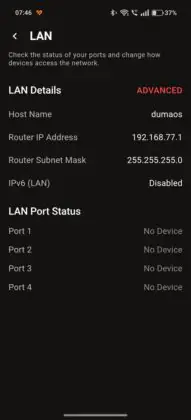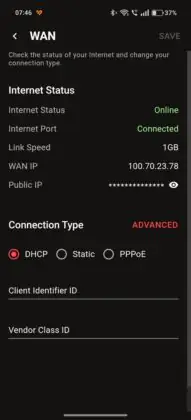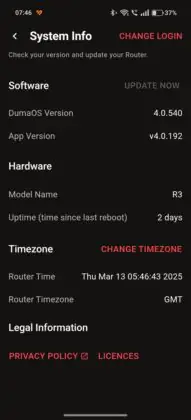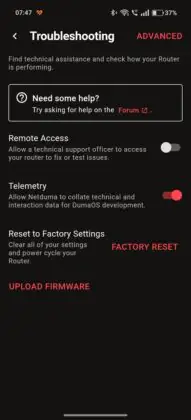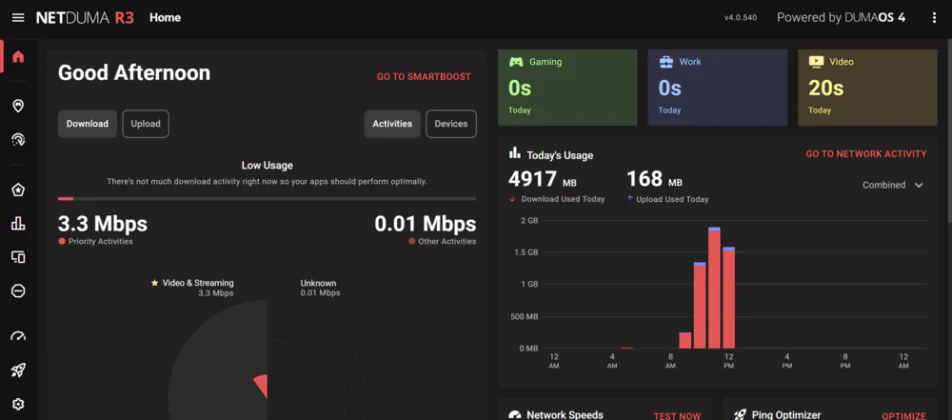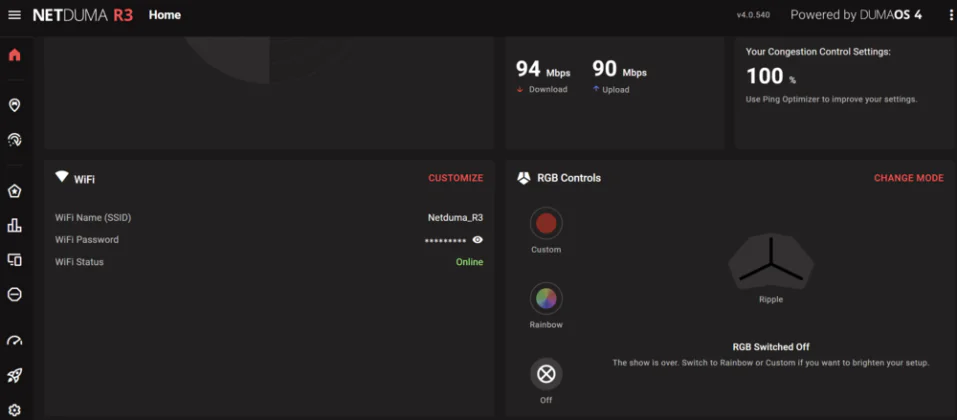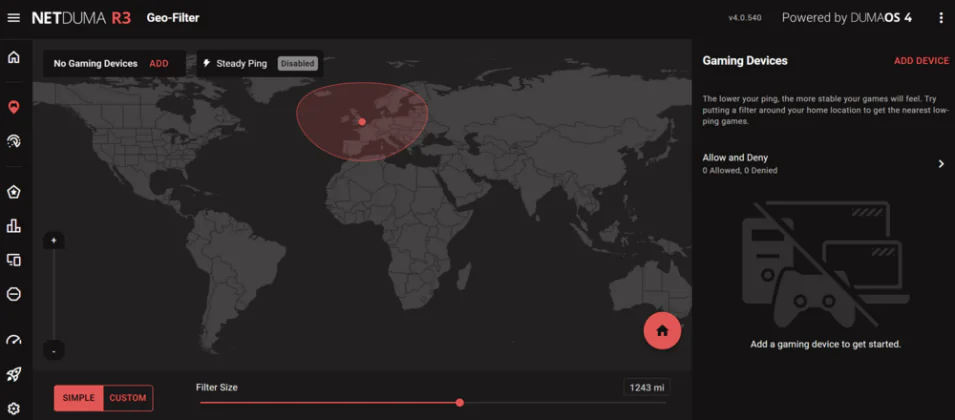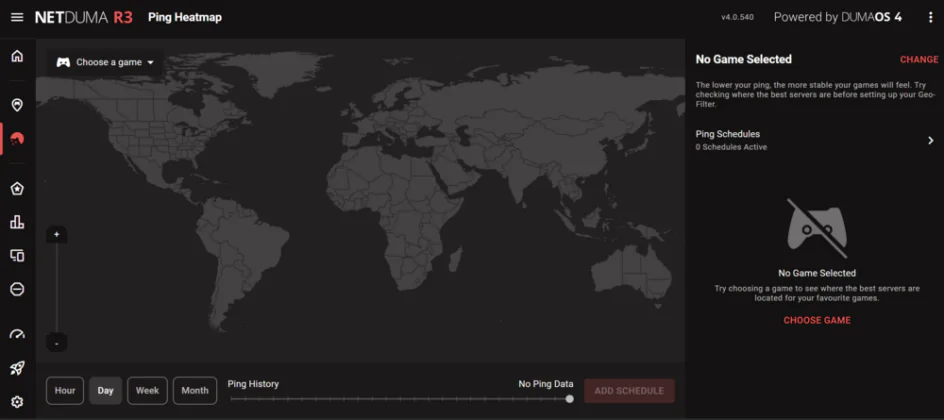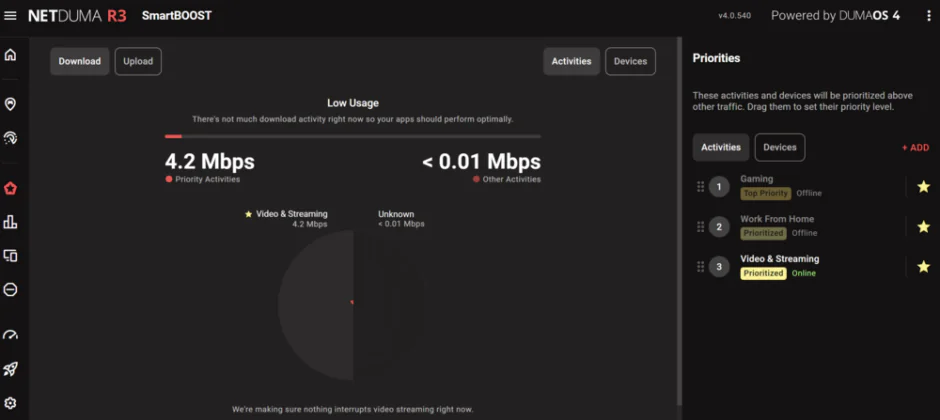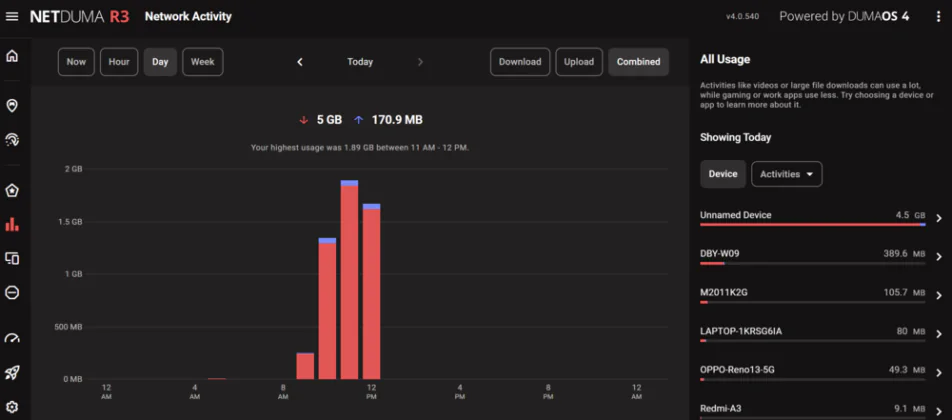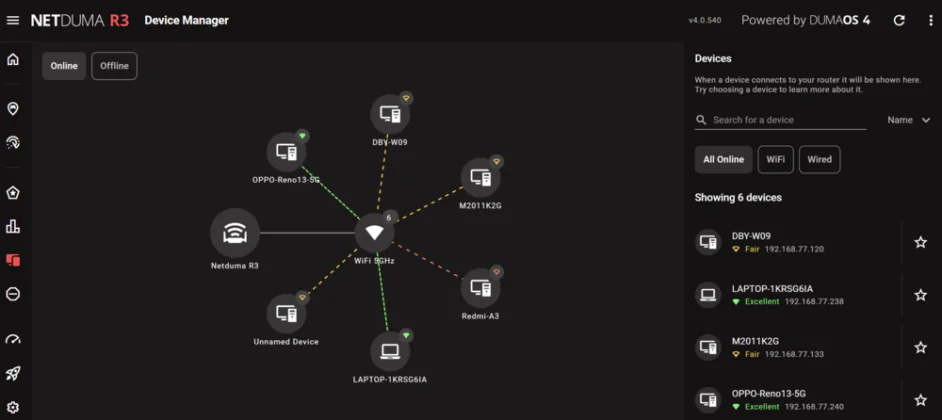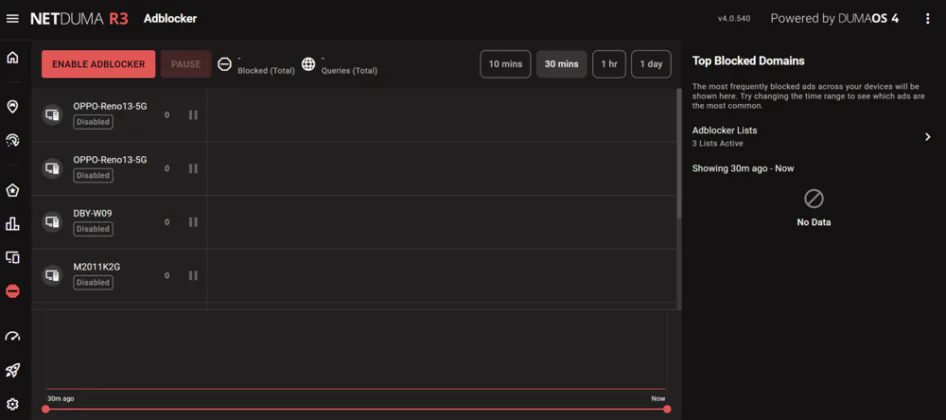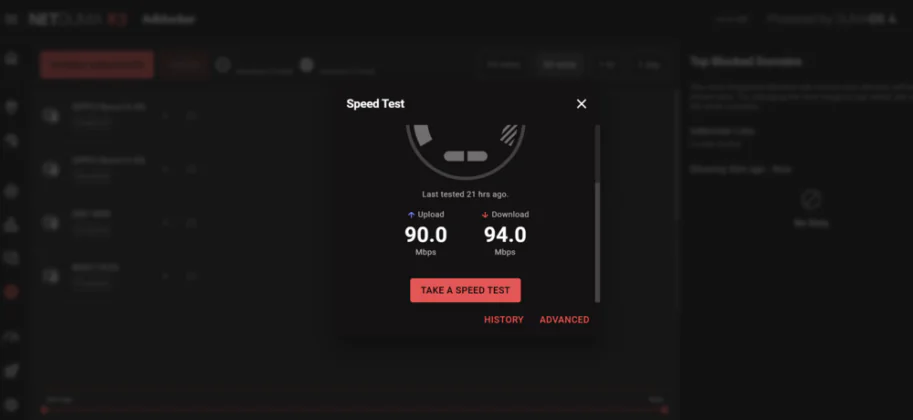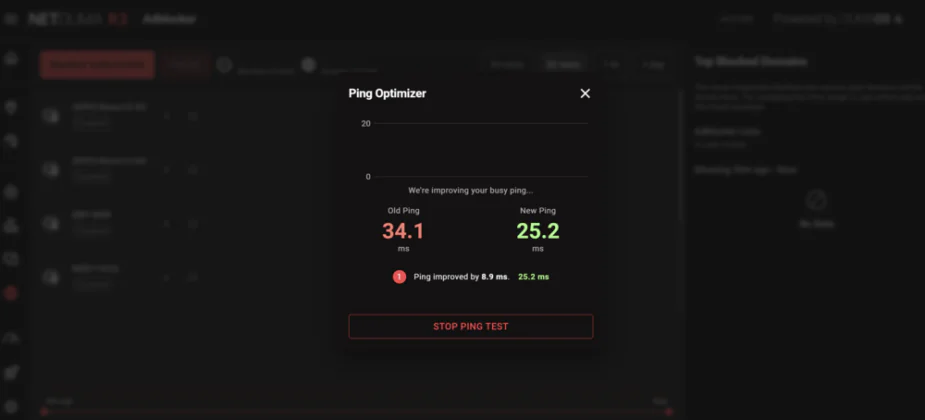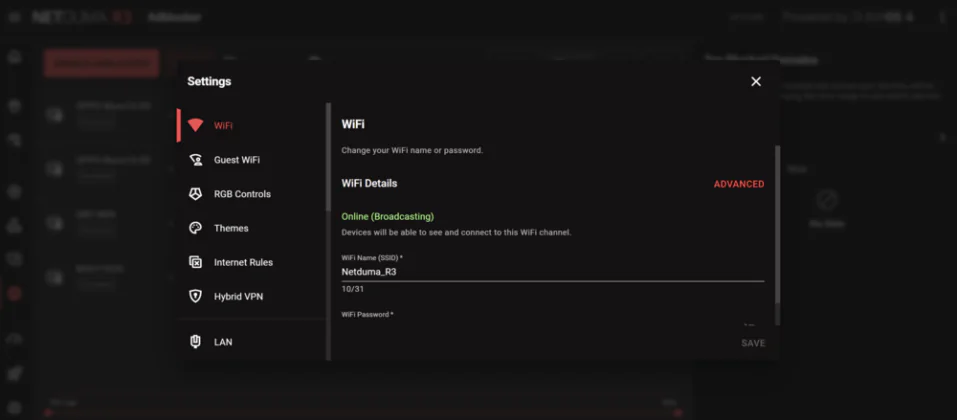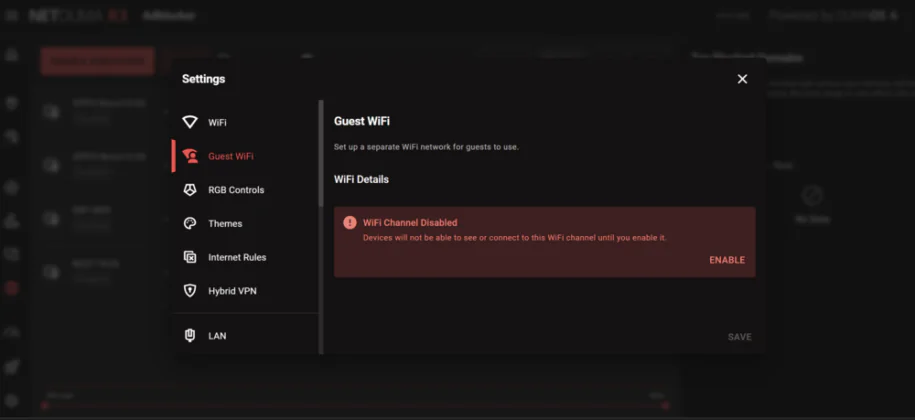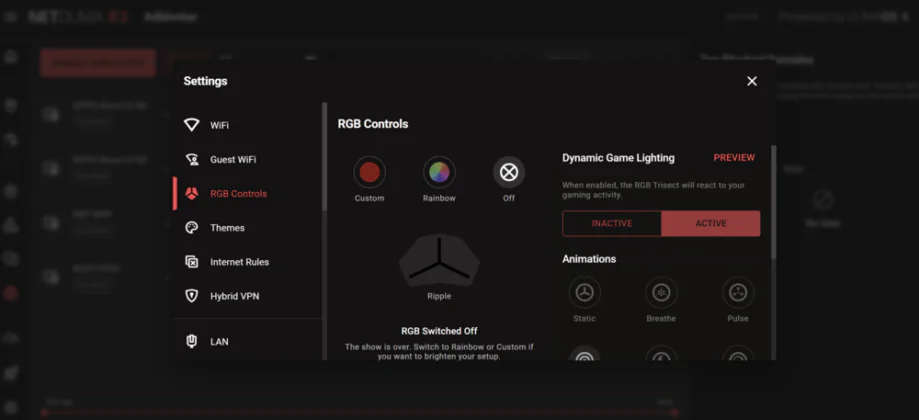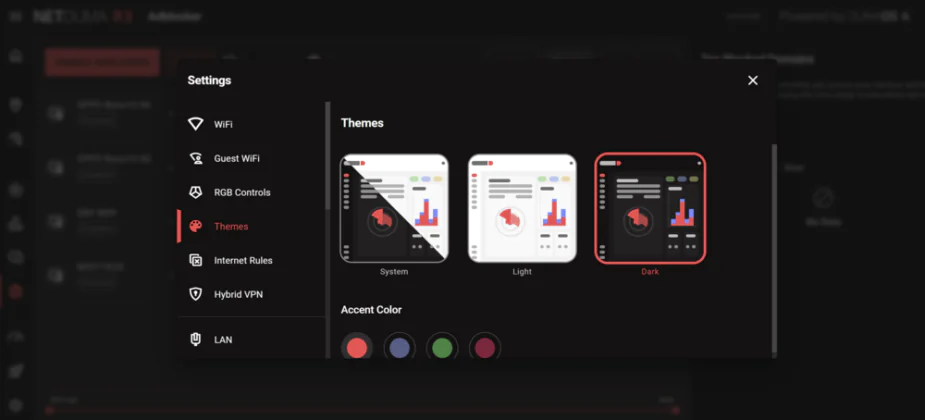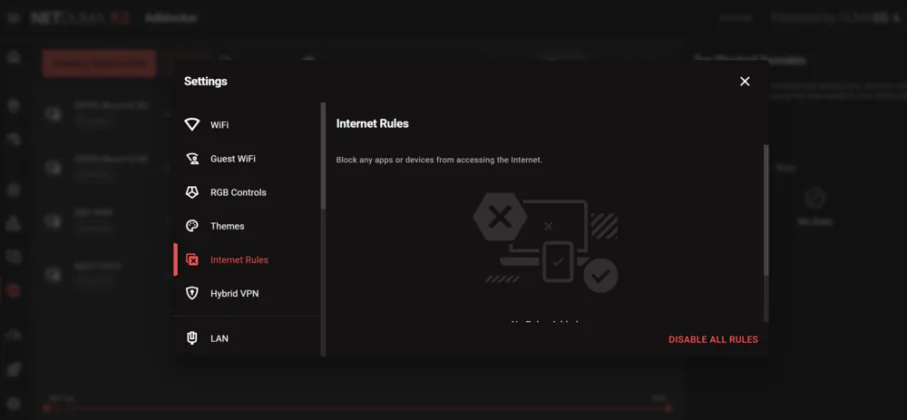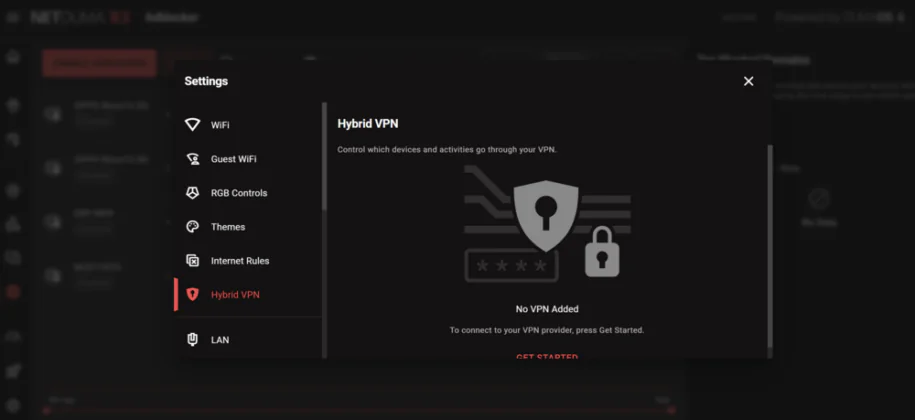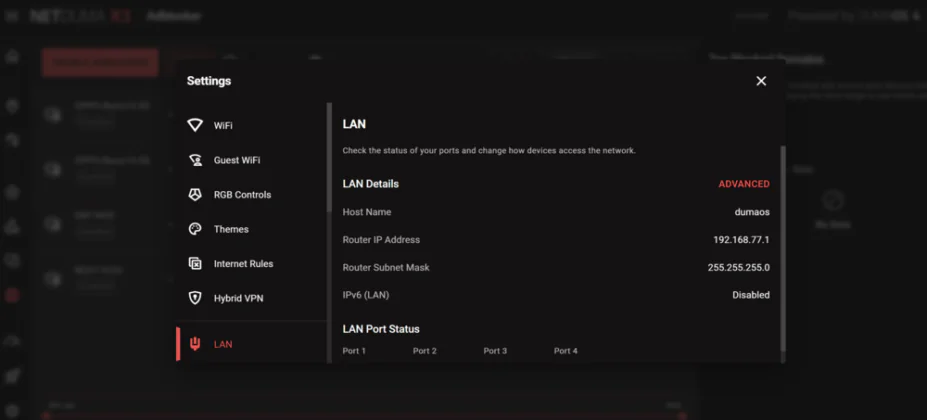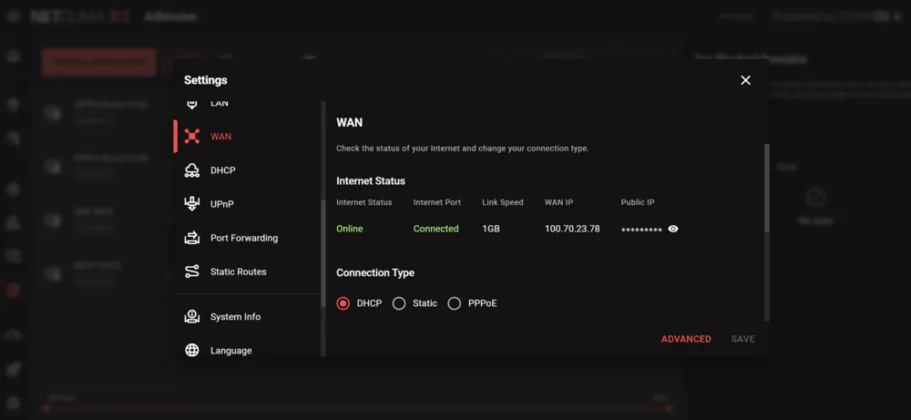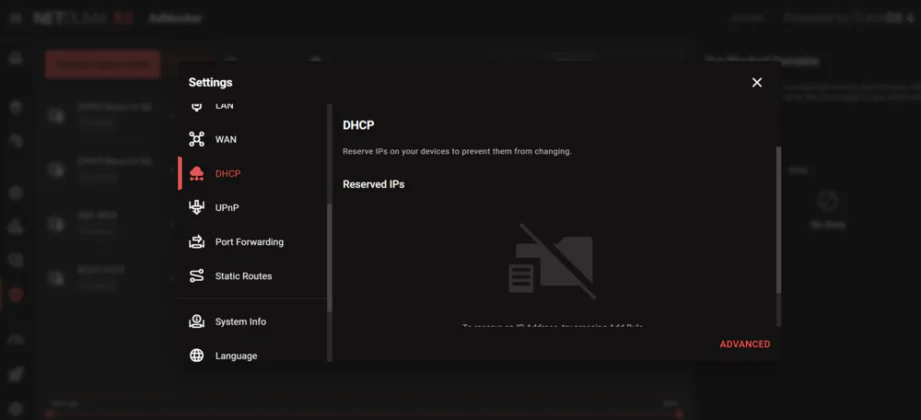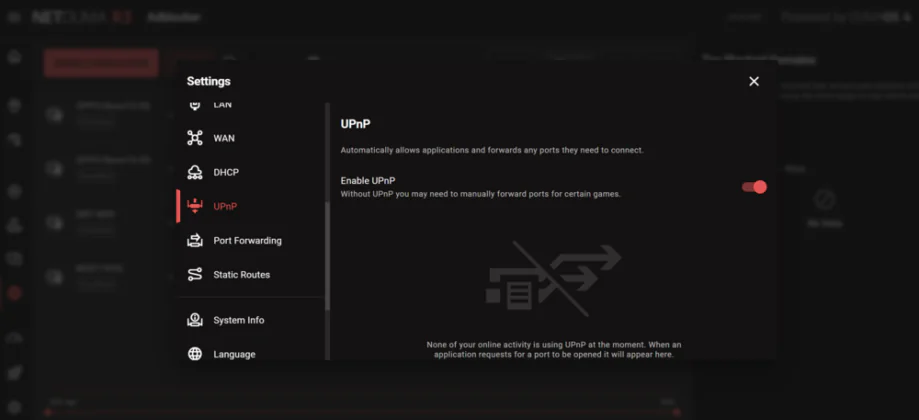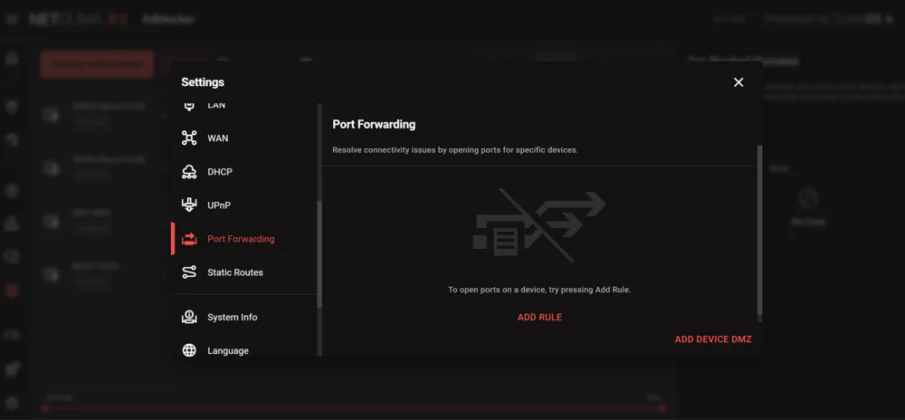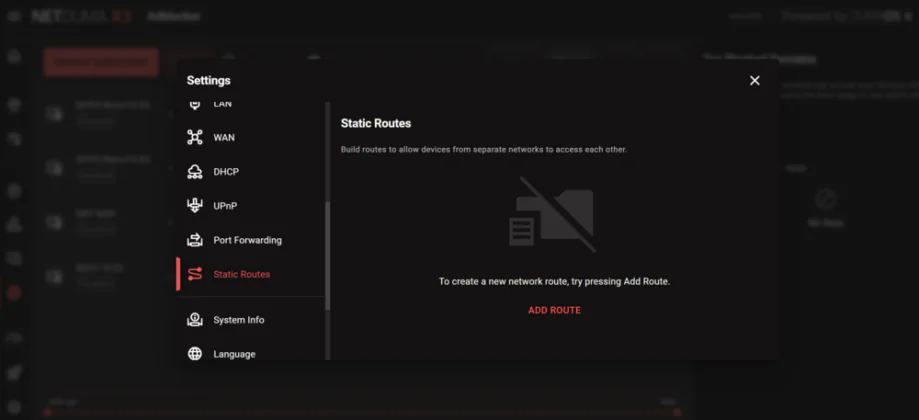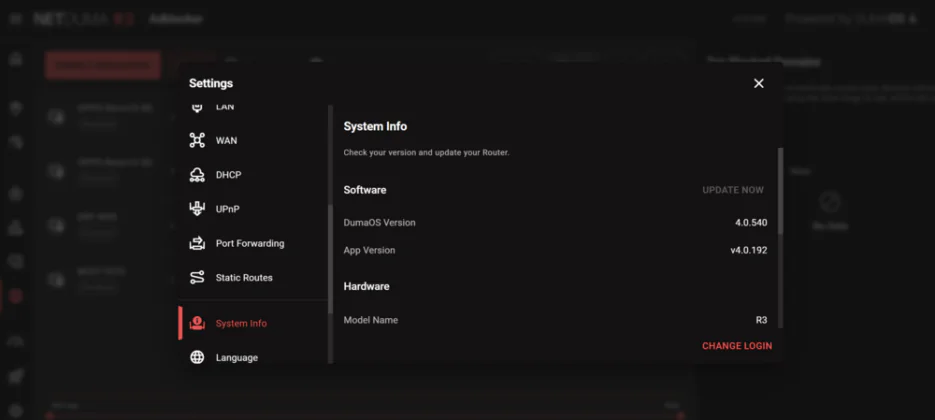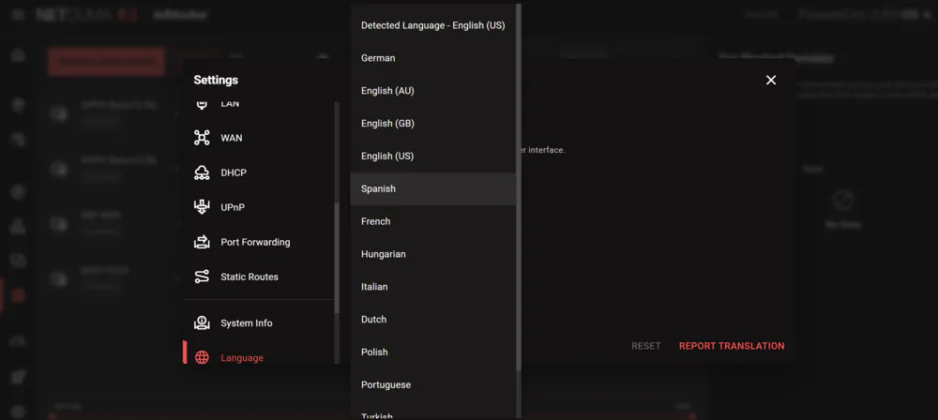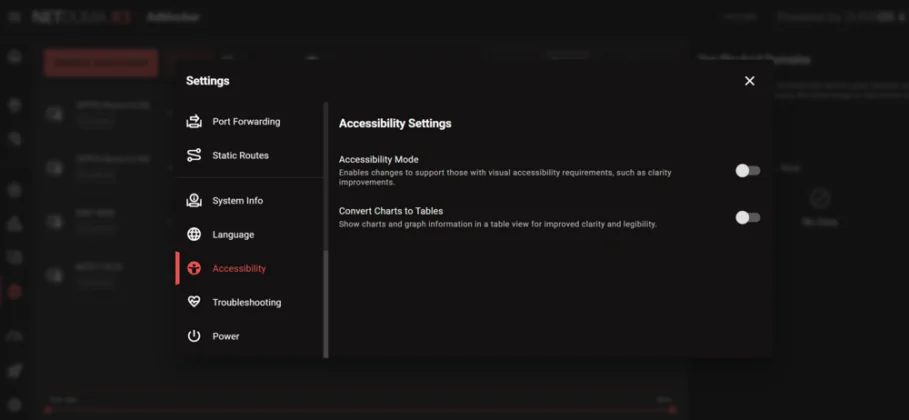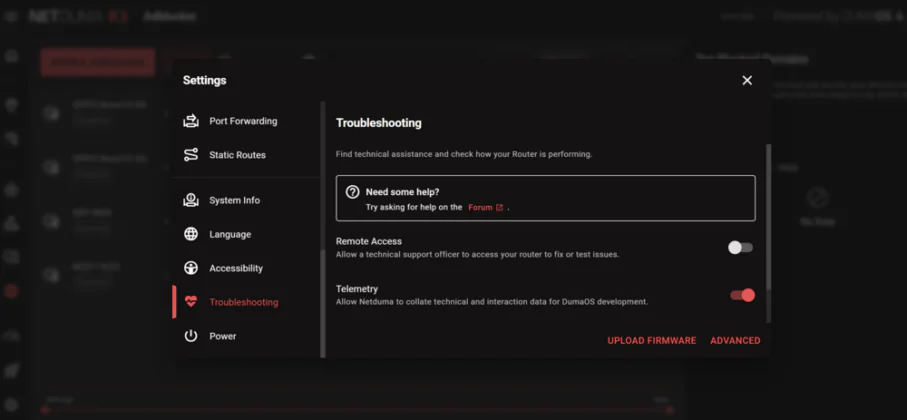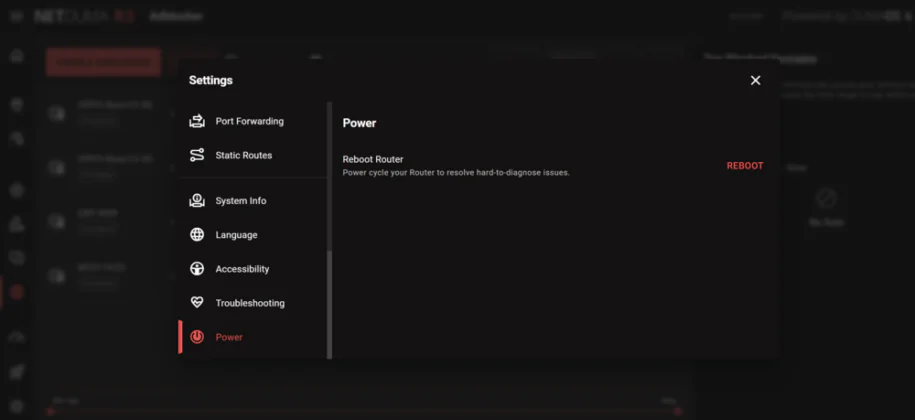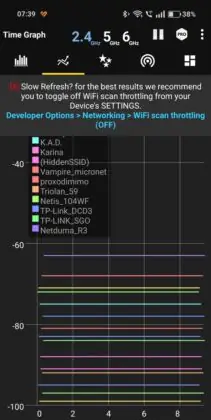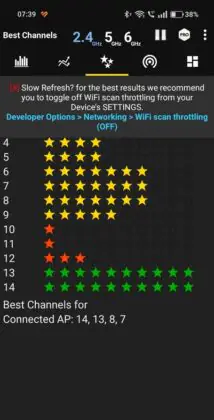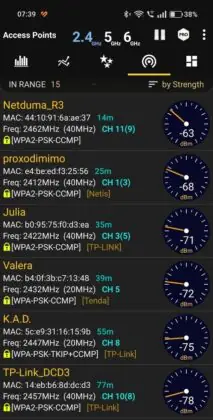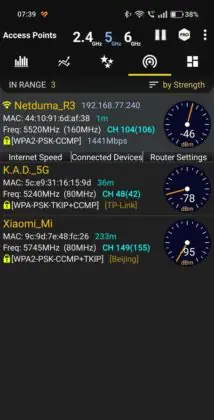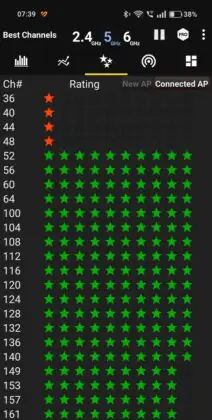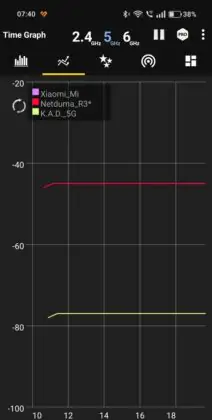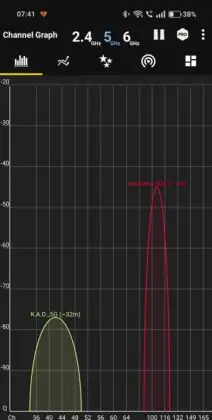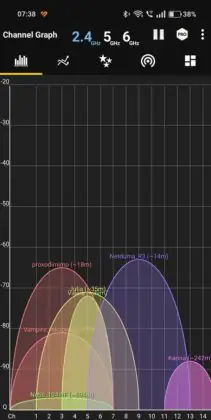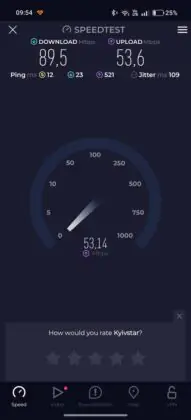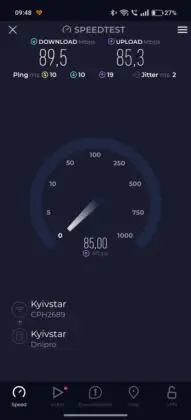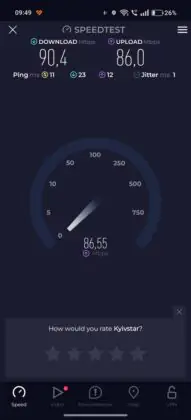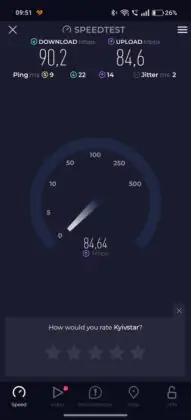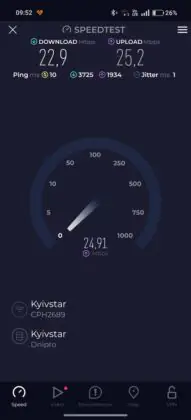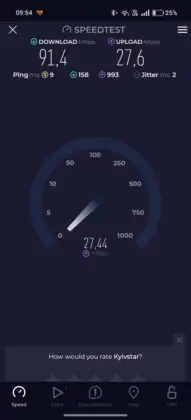© ROOT-NATION.com - Use of content is permitted with a backlink.
Today, we’re taking a look at the Netduma R3 gaming router, which comes with features that may appeal not only to gamers but also to general users.
Gaming accessories play a key role in enhancing comfort, efficiency, and immersion. They can significantly impact gameplay by reducing latency, improving performance, and even preventing fatigue during long sessions. A fast and stable internet connection is especially important for gamers, ensuring quick response times in online matches. That’s why many seek a gaming router capable of minimizing lag, supporting QoS for traffic prioritization, and providing strong Wi-Fi coverage with high-performance antennas.
Design also plays a significant role. For years, gaming routers have been easily recognizable thanks to their bold color schemes and RGB lighting, making them stand out from standard networking devices.
Choosing a gaming router remains an important decision for gamers. The market is packed with options, as nearly every networking equipment manufacturer aims to carve out a place in this segment. Established brands like ASUS and TP-Link continue to dominate, while newer players such as Netduma are looking to compete.
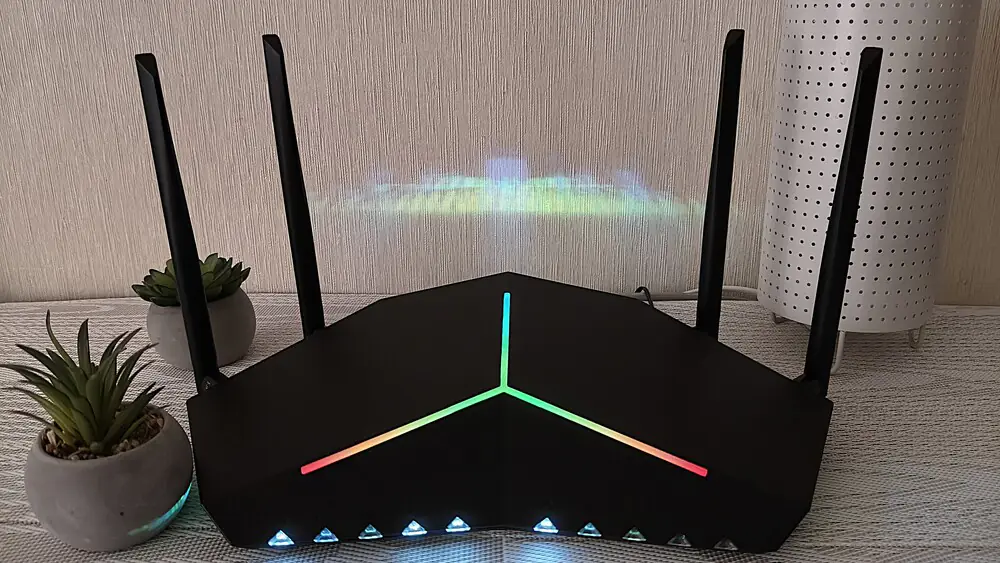
I’ve always been interested in networking devices, as manufacturers often use them to showcase their latest innovations. So when representatives from the British company Netduma offered me the chance to test their new gaming router, I gladly accepted. For a few weeks, the Netduma R3 took up residence in my apartment. Today, I’ll be sharing my impressions of this intriguing networking device.
Read also: Review of ASUS ZenWiFi BT10: Wi-Fi 7 Speed and Stability
Our video about Netduma R3
Don’t want to read a lot of text? Watch a short video!

A few words about Netduma
I’m sure many of you haven’t heard of this company and might assume it’s just another unknown Chinese brand. However, that’s not the case.
Netduma is a relatively young British company founded in 2014, specializing in technologies aimed at improving internet connection quality. According to the company’s own developers, their mission is to eliminate common connectivity issues such as dropped video calls, buffering during streaming, and lag in online gaming. From the very beginning, Netduma has focused on telecommunications and networking solutions.
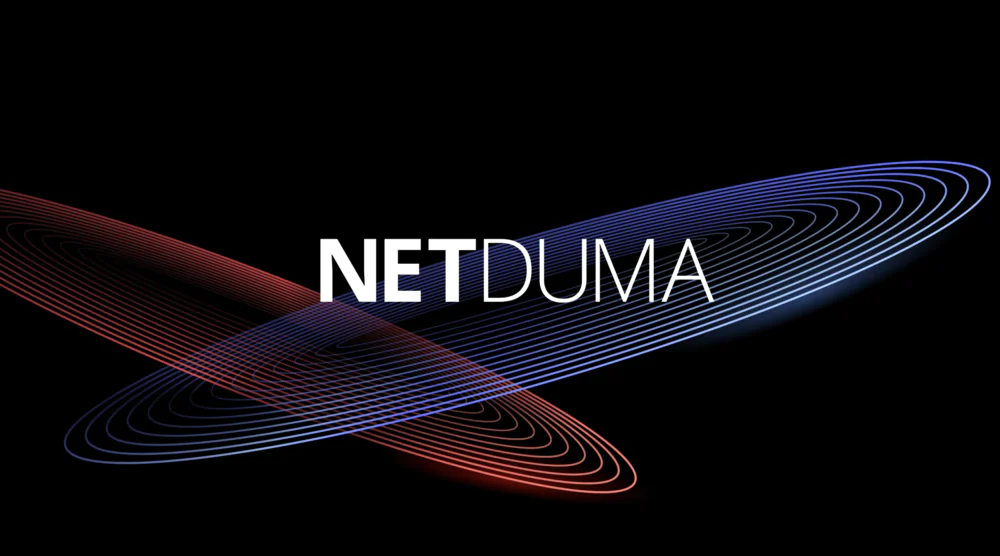
Netduma entered the networking market in 2017 with the release of its first router, the Netduma R1. It quickly gained popularity among gamers, largely due to its unique software developed by the company’s founder. Over time, Netduma expanded its team and continued refining its products, eventually leading to partnerships with major companies like Nokia.

In 2024, Netduma introduced Netduma Optima, the world’s first comprehensive solution designed to improve internet quality. This software runs directly on the router, optimizing streaming, ensuring stable video calls, and reducing latency in online games.
By December 2024, Netduma celebrated its tenth anniversary, evolving from a small startup into a company whose technology is now integrated into millions of routers worldwide.
In other words, the British company has gained considerable experience in the field of networking equipment, particularly for gamers, which made me curious to see what their latest model could do. Let’s dive in.
Read also: ASUS ZenWiFi BQ16 Review: Mesh with Wi-Fi 7
Positioning and price
It’s clear that the Netduma R3 will primarily appeal to gamers looking for easy network management or optimization for gaming. However, it’s also a device that will interest general users. With an attractive design, though clearly geared towards gamers, solid performance, high speeds, improved range, and more reliable connectivity, it offers a strong overall package.
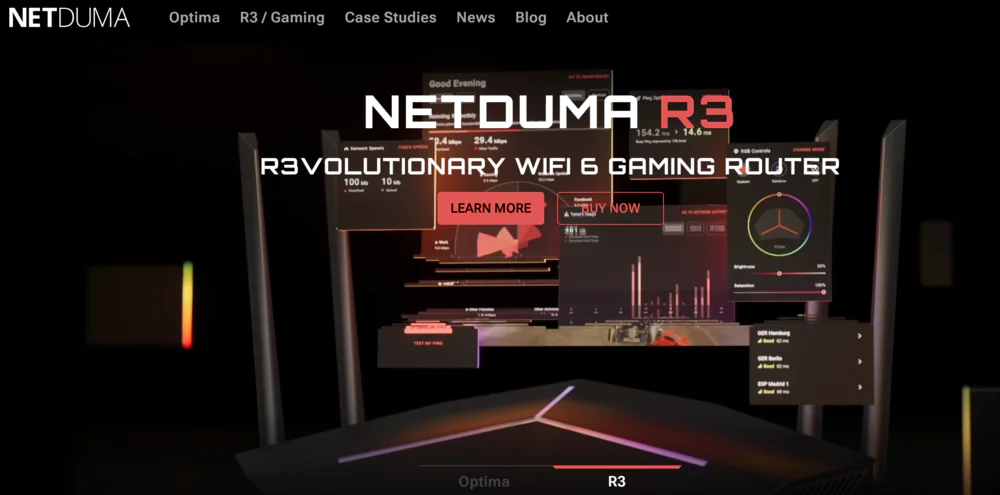
The Netduma R3 is the latest version of the company’s gaming routers, so it’s no surprise that it features the new DumaOS software and supports Wi-Fi 6. Some might wonder why it doesn’t include the newer Wi-Fi 7 standard, but for gamers, this isn’t a major concern. What matters most to them is performance and speed, and Wi-Fi 6 delivers these in abundance. Additionally, there are still relatively few devices in the gaming segment that support Wi-Fi 7.
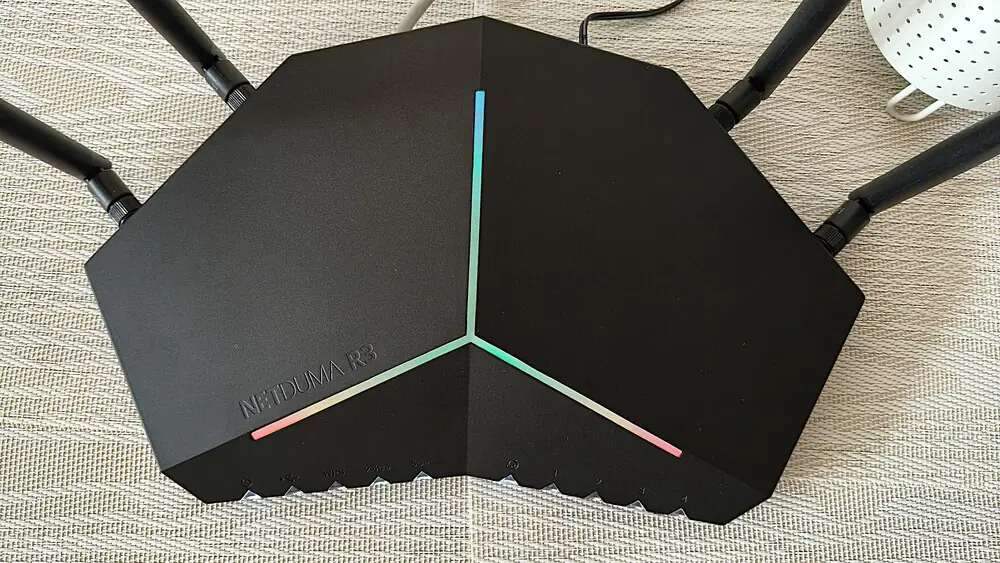
Wi-Fi 6 enhances your internet connection by making it faster and more reliable, which is ideal for gaming and using multiple devices simultaneously. Additionally, the router supports both 2.4 GHz and 5 GHz bands, operating in a unified mode. This is quite convenient, as you don’t have to select the right band for each device or accessory. The new DumaOS, the router’s operating system, introduces gaming-focused features like GeoFilter 2.0, SmartBOOST, and Ping Optimizer. The company claims that these features significantly improve the gaming experience.
The gaming router is powered by a robust 1.5 GHz quad-core processor, 256 MB of DDR3 RAM, and 256 MB of flash storage. Additionally, it features RGB lighting, adding a nice touch to its overall design.
As for the price and where to purchase it, the Netduma R3 is available directly from the manufacturer’s website for €207.50. Ordering is straightforward, and you can place your order using this link.
Read also: Review of the ASUS RT-BE92U Router with Wi-Fi 7 Support
Netduma R3 specifications
- Type: wireless router
- Processor: 1.5 GHz 4-core ARM processor
- Memory: 256 MB NAND Flash, 256 MB DDR3 RAM
- Power over Ethernet (PoE): no
- Power supply: AC input 110~240 V (50~60 Hz); DC output 12 V with max. 1.5 A
- OS version: DumaOS 4
- Access to DumaOS: iOS/Android apps, mobile and desktop web browsers
- Standard: Wi-Fi 6 (802.11ax), backward compatibility with 802.11a/b/g/n/ac Wi-Fi
- Wi-Fi Performance: AX3000, 2.4 GHz: 1000 Mbps, 5 GHz: 2402 Mbps
- Wi-Fi Features: Beamforming technology, Wi-Fi 6, 1024-QAM high data transfer rates, bandwidth options of 20/40/80/160 MHz
- Wireless Security: WPA2
- Antennas: 4 external removable
- Connection interface (WAN/LAN ports):4×LAN Gigabit, 1×WAN (10/100/1000 Mbps)
- USB ports: 1×USB 3.0
- WAN connection type: automatic IP, static IP, PPPoE, PPTP, L2TP
- Weight: 0.65 kg
- Dimensions: 310×187×62 mm
As you can see, it’s a pretty good gaming router with excellent functionality. But first things first.
Read also: ASUS ROG Rapture GT-BE19000 Review: Tri-Band Gaming Router
What’s in the package
The British company made a good impression from the very first moment. The new Netduma R3 comes in an attractive box made of sturdy cardboard. The design of the packaging emphasizes that this is a gaming-oriented networking device.

The box is black, with an image of the router on the front, along with the name and a label highlighting that it’s a gaming device with Wi-Fi 6. The DumaOS logo is placed at the bottom left, and there’s an emphasis on the router’s RGB lighting. It’s clear right away that this is a gaming-oriented device, complete with all the associated features.
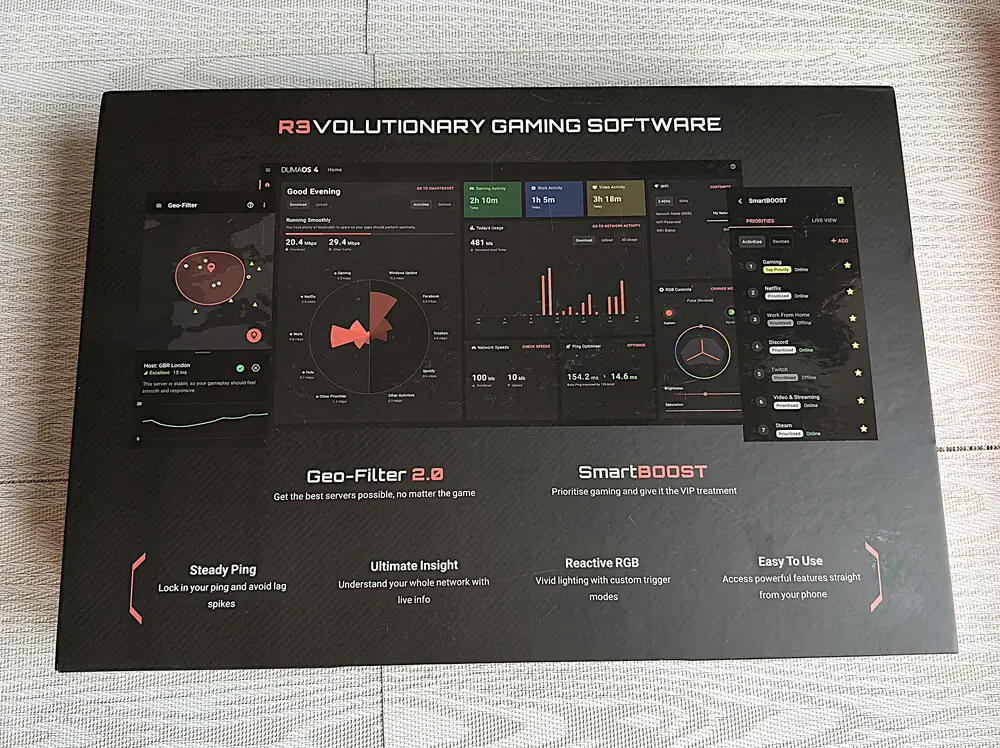
The back of the box may be of more interest to some, as it places a special emphasis on the features of DumaOS 4, highlighting its design tailored specifically for gaming. There’s also a list of well-known features such as GeoFilter 2.0, SmartBoost, Steady Ping, and others. Even the packaging provides a lot of useful information, which is valuable for those trying a Netduma router for the first time.
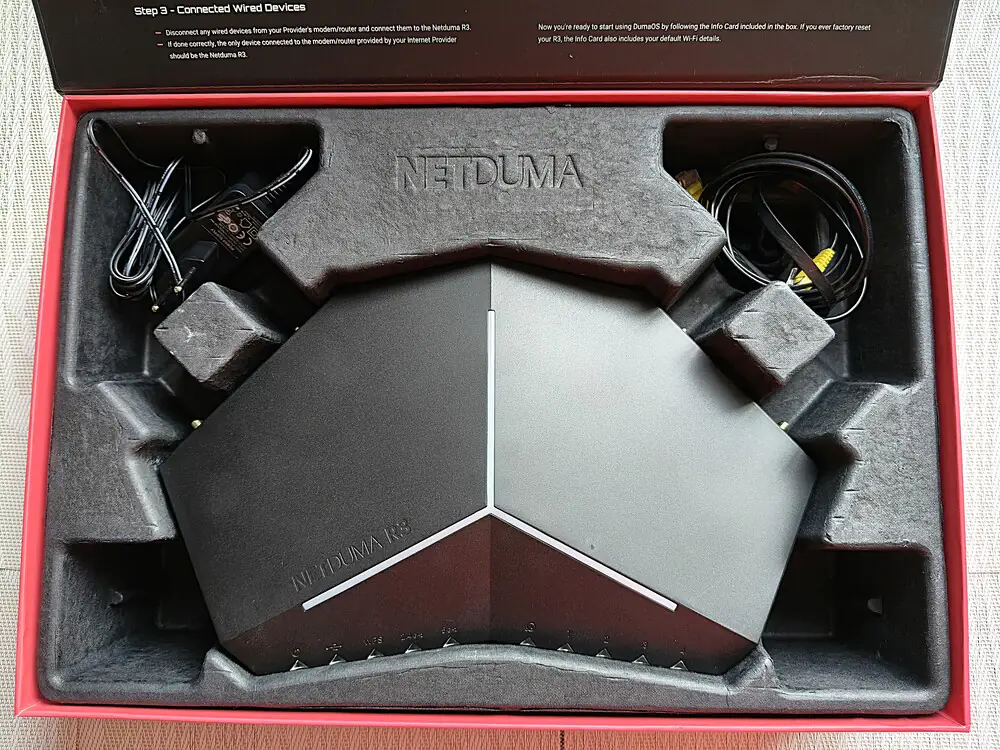
Inside, you’ll find the router securely placed in a custom cardboard tray to protect it from damage. The tray is divided into three main compartments, each designed to hold the router, its power adapter, and the RJ45 cables in their respective places.
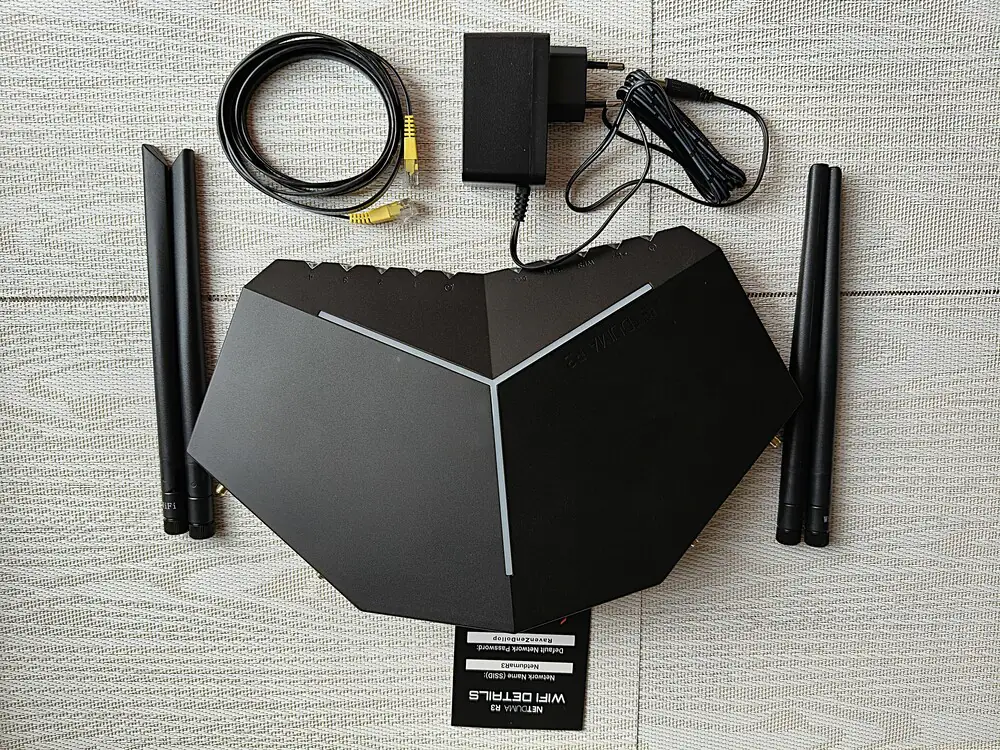
The router comes with an external power adapter, although its power output is not specified. Additionally, the package includes a flat CAT-6 Ethernet cable in a yellow and black color scheme.

Beneath the Netduma R3, you’ll find four detachable external antennas, each securely packed in custom cutouts. There’s also an access card placed under the cardboard tray, containing all the necessary information for the initial router setup.
The package offers everything needed for proper configuration and use of the router.
Read also: ASUS RT-BE88U Review: Router with Up to 34 Gbps Throughput
Purely game design
When I first took the router out of the box, I couldn’t help but think it resembled some sort of spaceship, with elements reminiscent of the famous F-117 jet, styled like Black Manta. The Netduma R3’s body is made of black matte plastic, featuring an interesting shape that appears to be symmetrically split in half. All of this makes it a visually striking device. It’s definitely something that will catch the attention of your friends and guests.
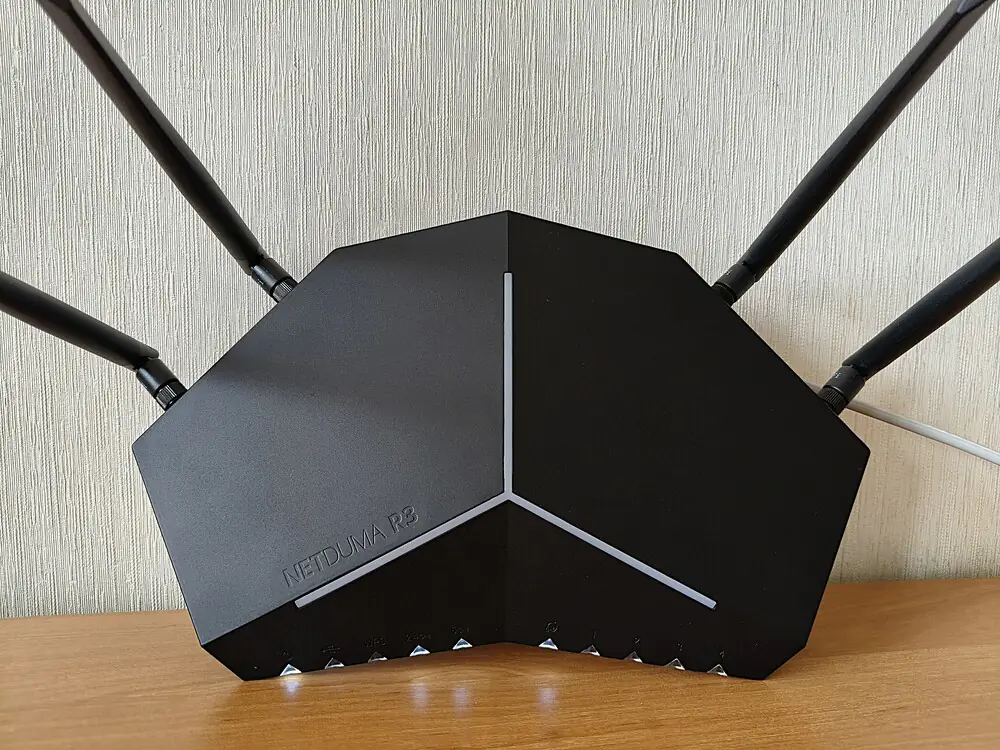
The plastic quality is quite good, and there’s no flexing anywhere. However, the surface does tend to pick up fingerprints quite easily, so keep that in mind.
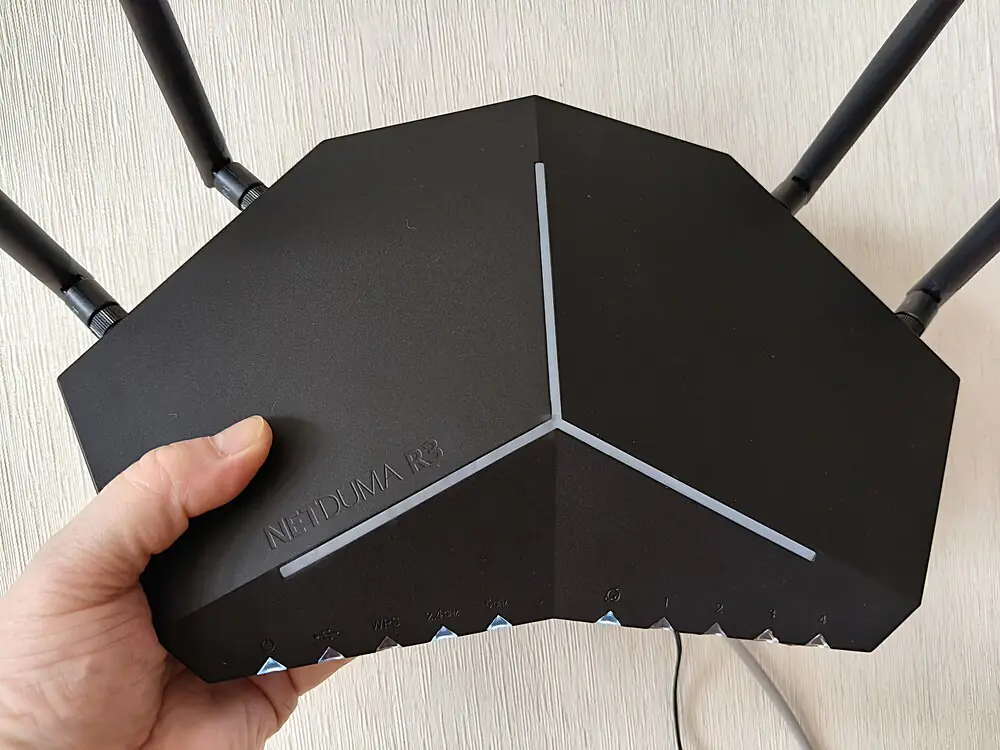
The device is quite lightweight, weighing only 650 g. The flat body with dimensions of 310×187×62 mm provides a stable position when placed on a flat surface.
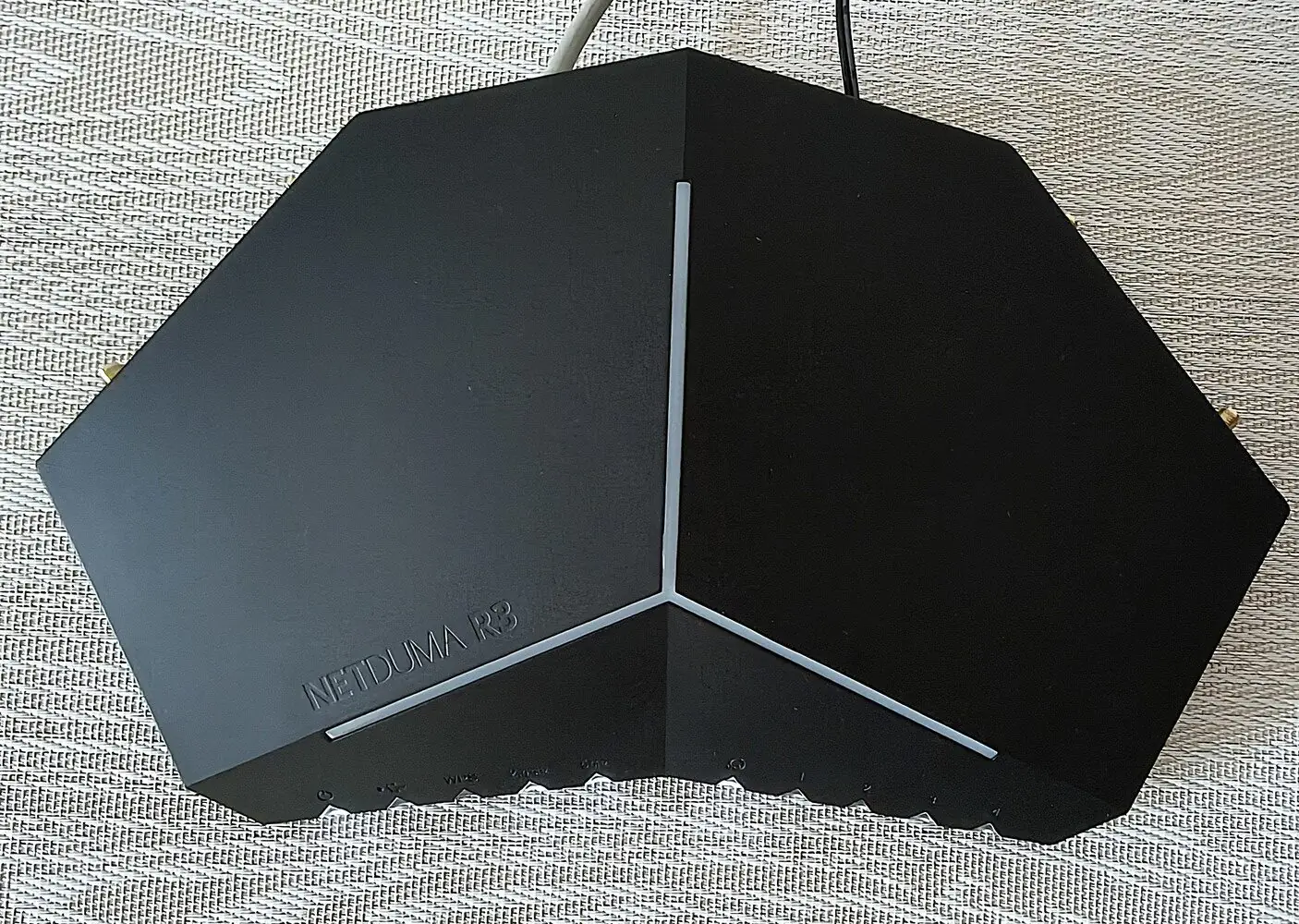
The main focus on the front panel is the strips shaped like an inverted “Y,” which contain RGB lighting. It’s worth noting that the RGB lighting adds a stylish touch to the Netduma R3, and it activates as soon as the router is plugged into the socket.
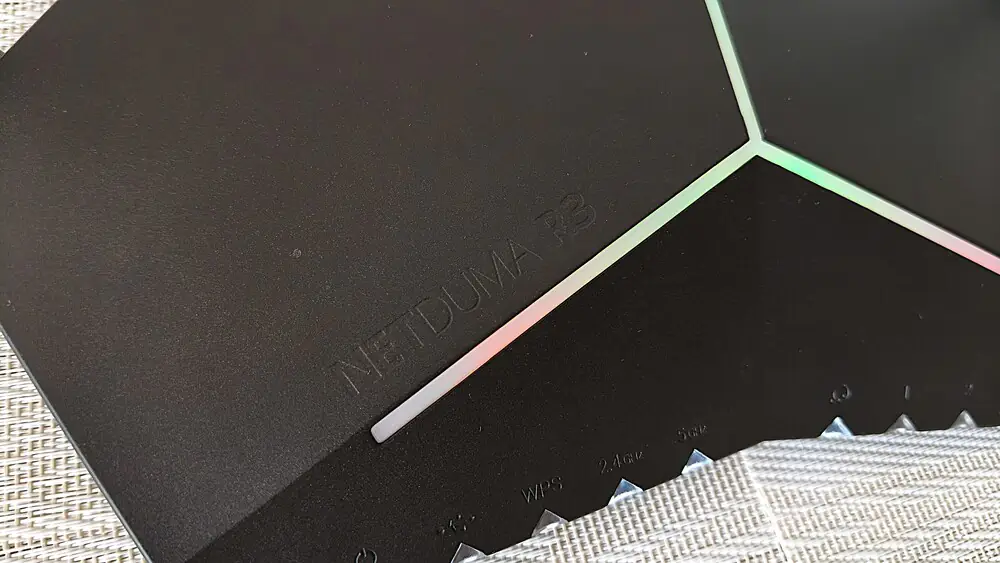
The RGB lighting on the Netduma R3 grabs attention and is quite bright, enhancing the overall aesthetics of the network device. It not only adds to its futuristic look but also gives the router a distinctive, eye-catching appeal.
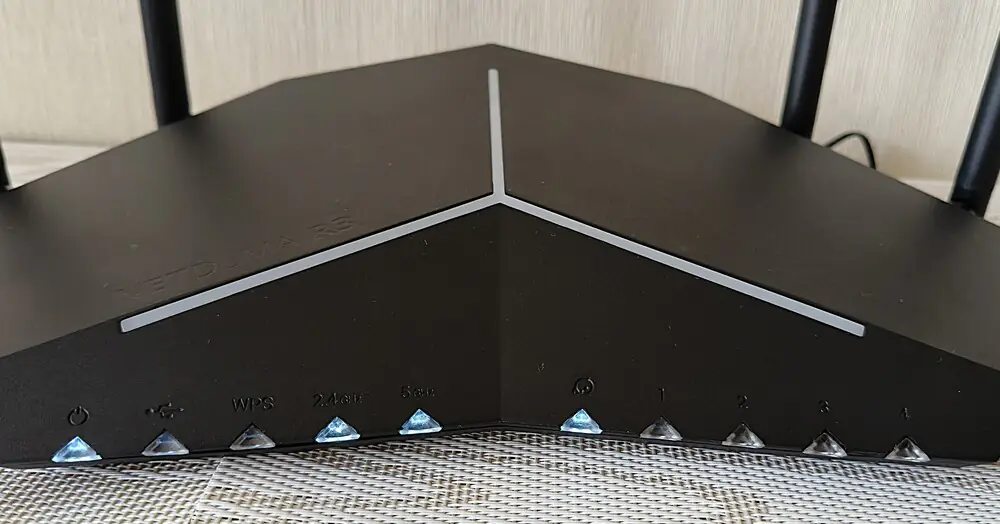
The lower edge of the front panel features several LED indicators, each serving a specific purpose. There are quite a few of them, and they provide clear feedback on the router’s status.
One downside is that while the RGB lighting can be turned off via the app (which can be useful at night), the LED indicators cannot be disabled. This might be an issue for some users, as the indicators emit a bright, cool-toned light.
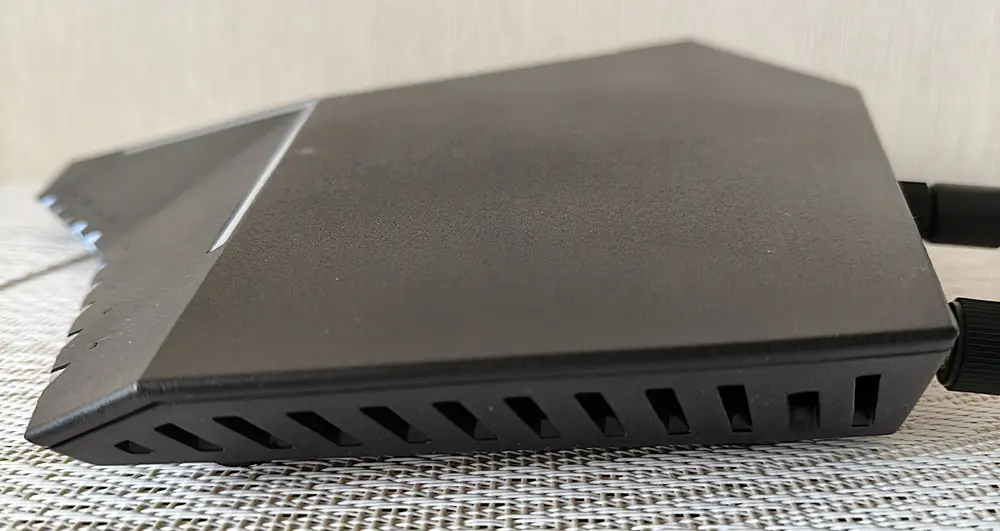
The side panels feature cooling vents that blend well with the overall design. They maintain the router’s futuristic aesthetic without looking out of place.

The back of the Netduma R3 houses four antennas, enhancing its futuristic appearance while hinting at its strong connectivity capabilities. They are positioned in pairs on each side, with ports and connectors placed between them, which I will cover later.

A few words about the antennas: the “Wi-Fi” labeling on each one was somewhat surprising.

I’ve only seen this kind of labeling on budget networking devices before. In my opinion, this is a misstep by the British company.
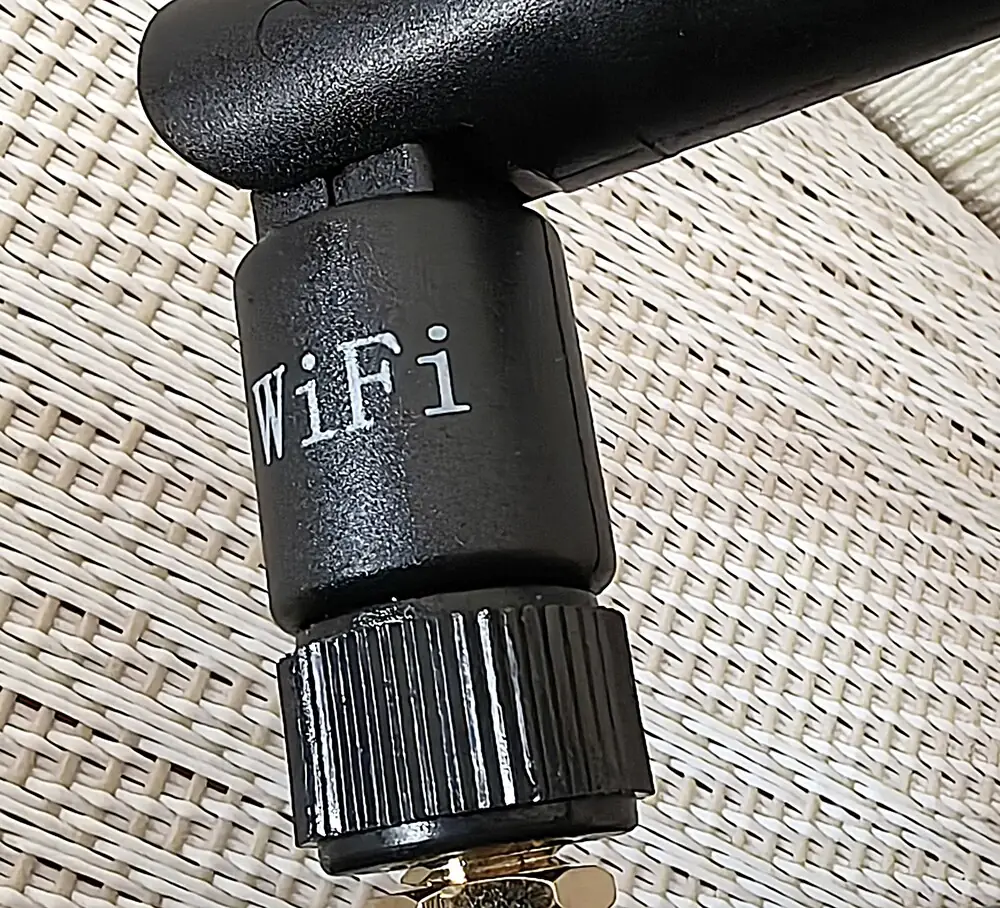
Attaching the detachable antennas is straightforward. The antennas on the NetDuma R3 are adjustable, which allows users to orient them according to their needs. This flexibility is practical for optimizing both signal coverage and the device’s appearance.
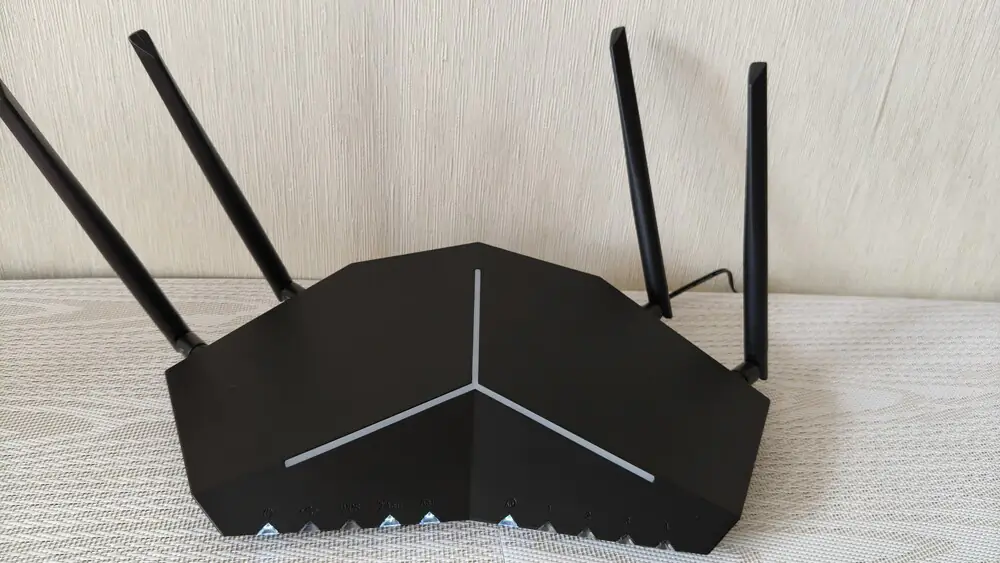
The bottom of the router also maintains the futuristic design, in line with the overall aesthetics of the device. Even the ventilation openings for the cooling system contribute to its distinctive look.
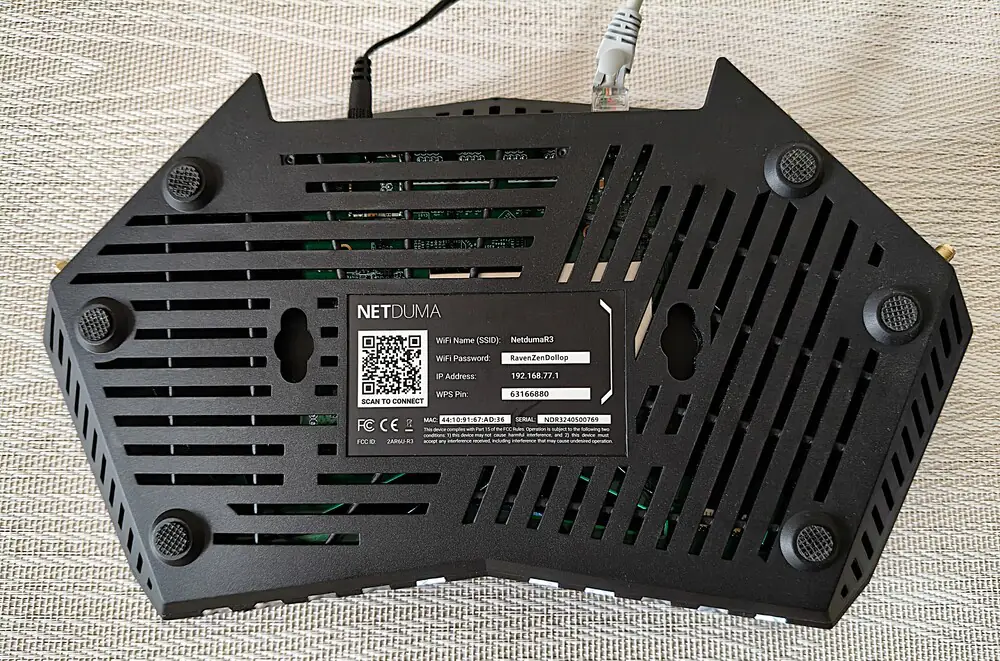
The bottom also features six round rubber feet (three on each side), which help stabilize the router, even on smooth surfaces like a desk.
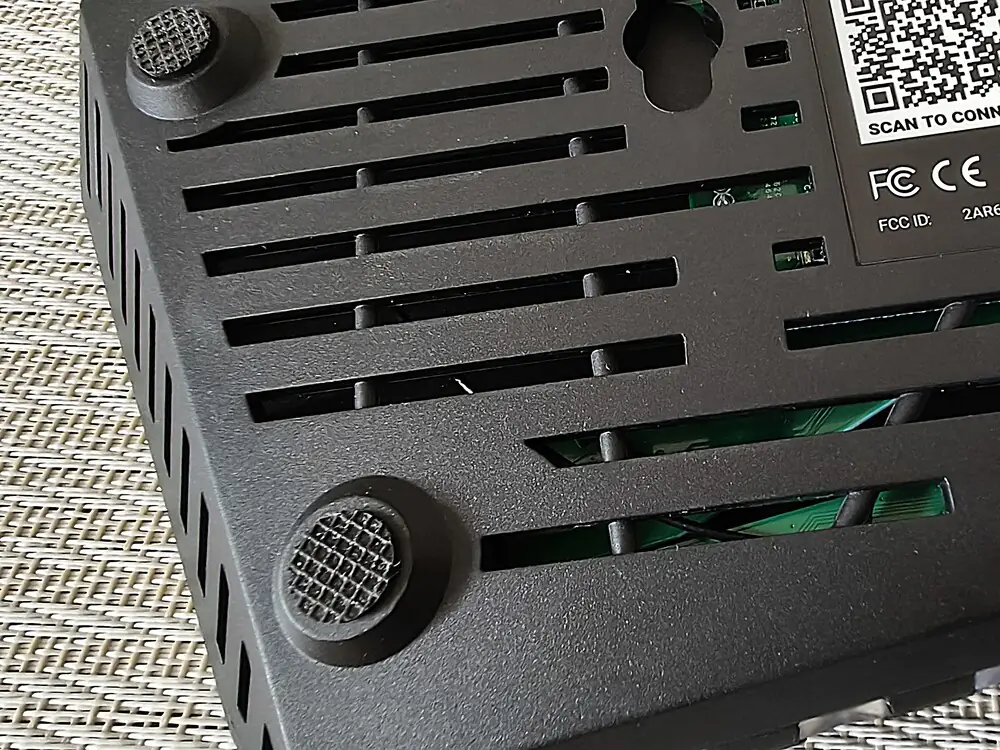
You can place the router on a bookshelf, but keep in mind that the antennas are relatively tall, which might limit placement options.
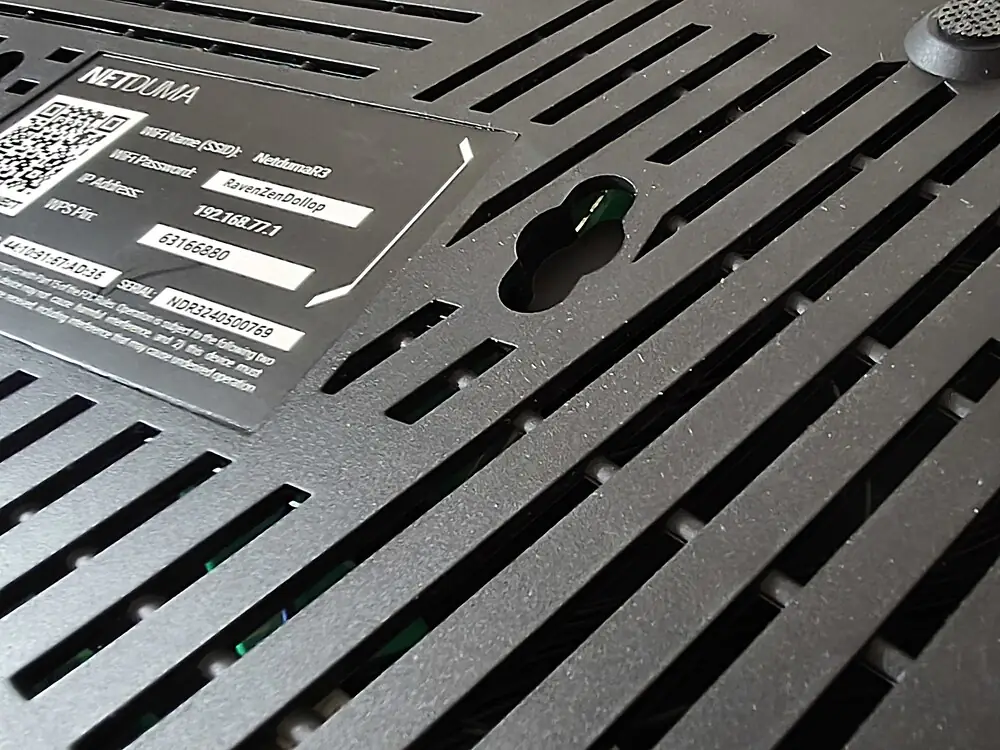
There are also wall-mounting holes, providing additional placement options to suit your setup and space constraints.
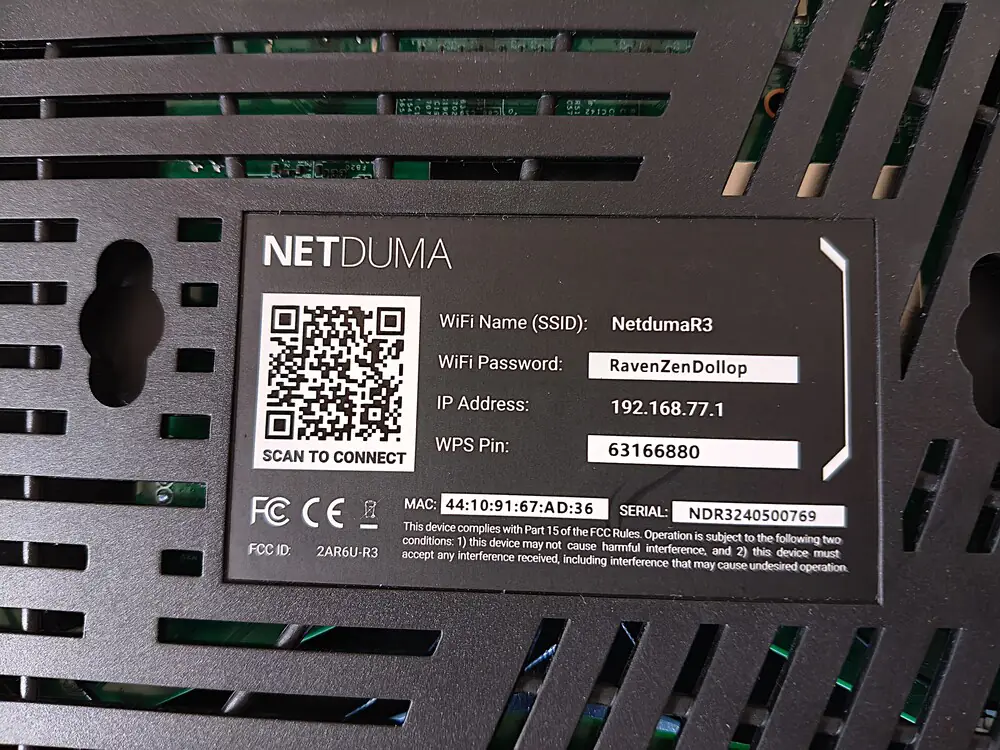
They also included a sticker with a QR code for quick setup, along with details about the default Wi-Fi settings, WPS PIN, and MAC address. This makes the initial setup process much more convenient.
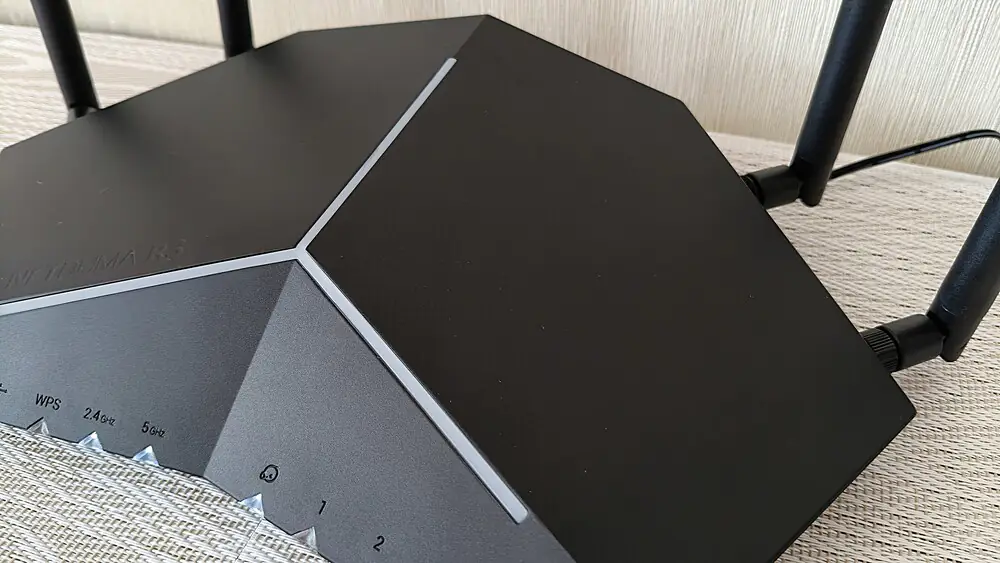
When fully assembled with the four attached antennas, the Netduma R3 maintains its futuristic design, resembling a spaceship. Once plugged in, it almost feels like a Star Trek U.S.S. Enterprise ready for takeoff. The RGB lighting definitely adds to the effect.
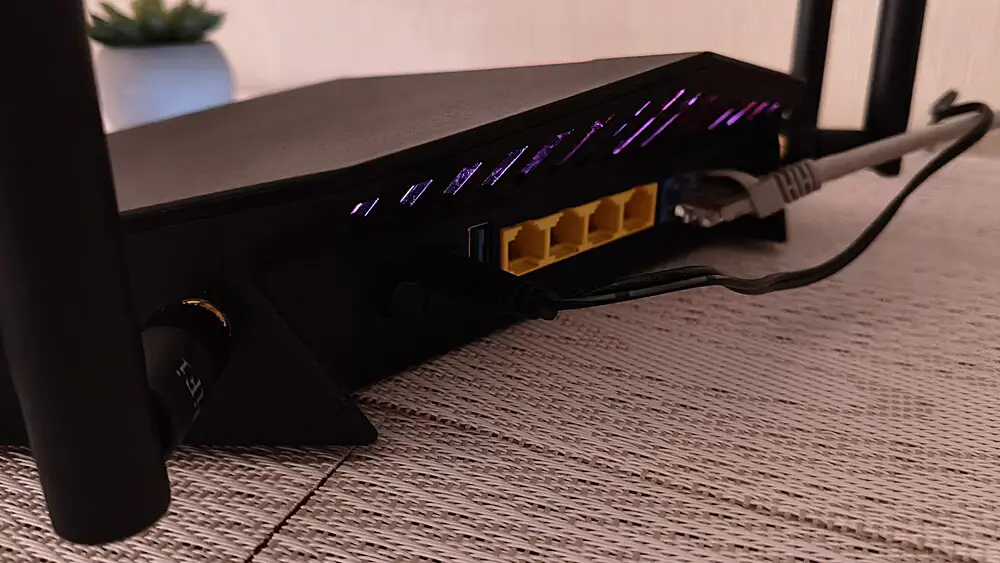
The RGB color also extends to the rear ventilation grille, giving the impression that the spaceship’s engine has been activated. It’s a creative design choice that will likely appeal to most potential buyers.
Read also: Ruijie Reyee RG-EW3000GX Router Review
Ports and connectors
Honestly, when I first looked at the router, I thought that gamers might find the number of ports insufficient. However, perhaps that’s just my opinion.
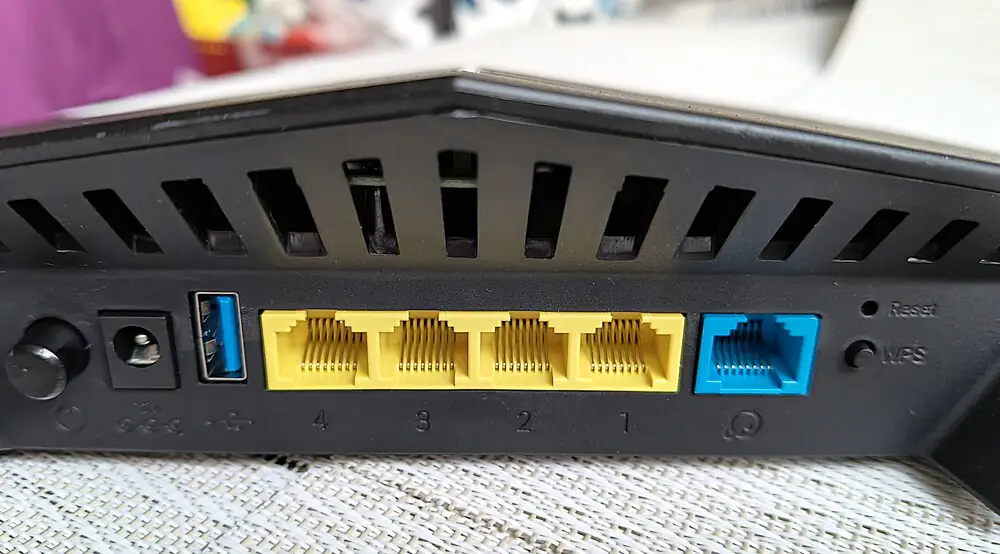
All the ports are located right in the center of the back of the Netduma R3. On the left, you’ll find the power button, followed by the round power input port and a USB 3.0 port.
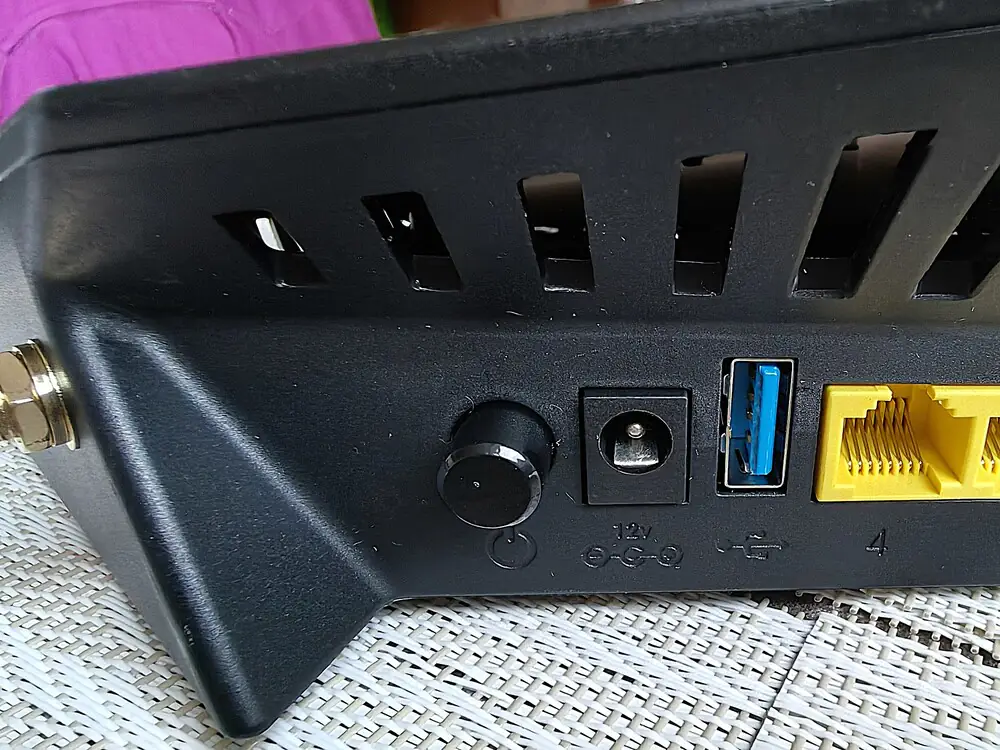
In the center, there are four yellow-colored Gigabit LAN ports, along with a blue-colored Gigabit WAN port.
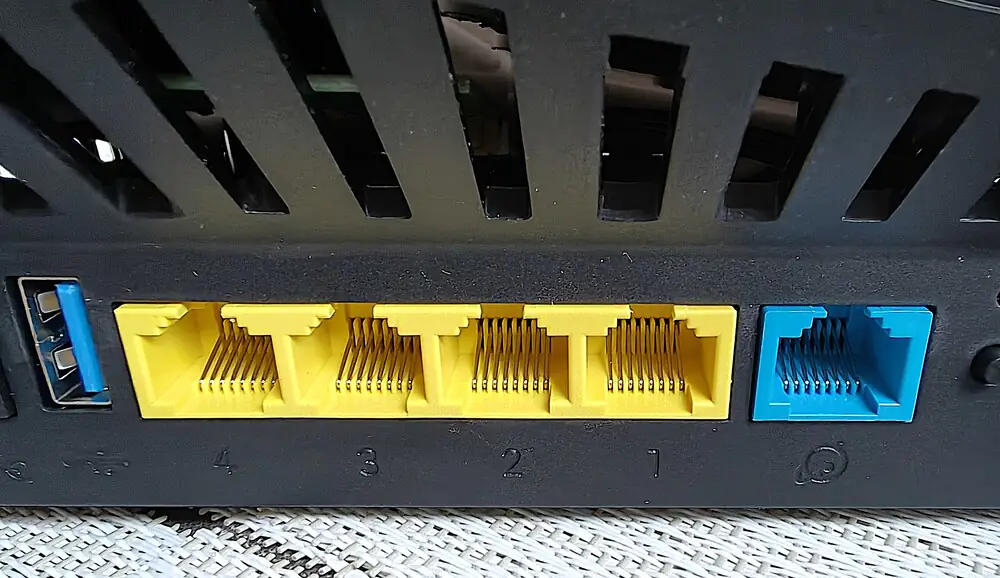
The router also features a Reset button for restoring settings and a WPS button, which allows devices to connect to the network without entering the Wi-Fi password.
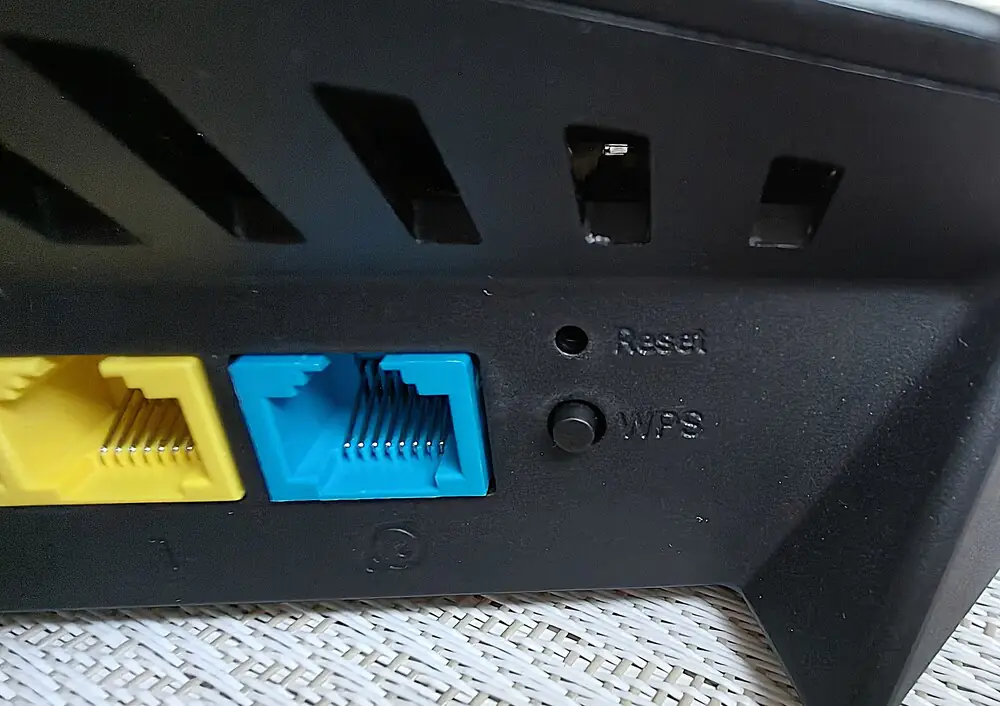
It seems like a standard set for a modern gaming router, but something felt missing. Although, perhaps this is just my preference after testing routers with 10-gigabit WAN/LAN ports.
Read also: ASUS RT-AX57 Go review: compact, mobile, but powerful router
Netduma R3 hardware
Like any spacecraft, such a device should have a worthy engine and equipment. The Netduma R3 certainly delivers on this front.
The main processor of this new router is a quad-core chipset with a 64-bit architecture, operating at a frequency of 1.5 GHz. Thanks to this powerful processor, we can expect excellent performance in VPN connections, USB 3.0 tests, and other tasks. The chipset also integrates a switch for all Gigabit Ethernet ports, both for the wide area network (WAN) and the local area network (LAN). Of course, it includes NAT acceleration, the ability to use Jumbo Frames in the home network, link aggregation for wireless ports, and also supports link aggregation in the wired Internet network.
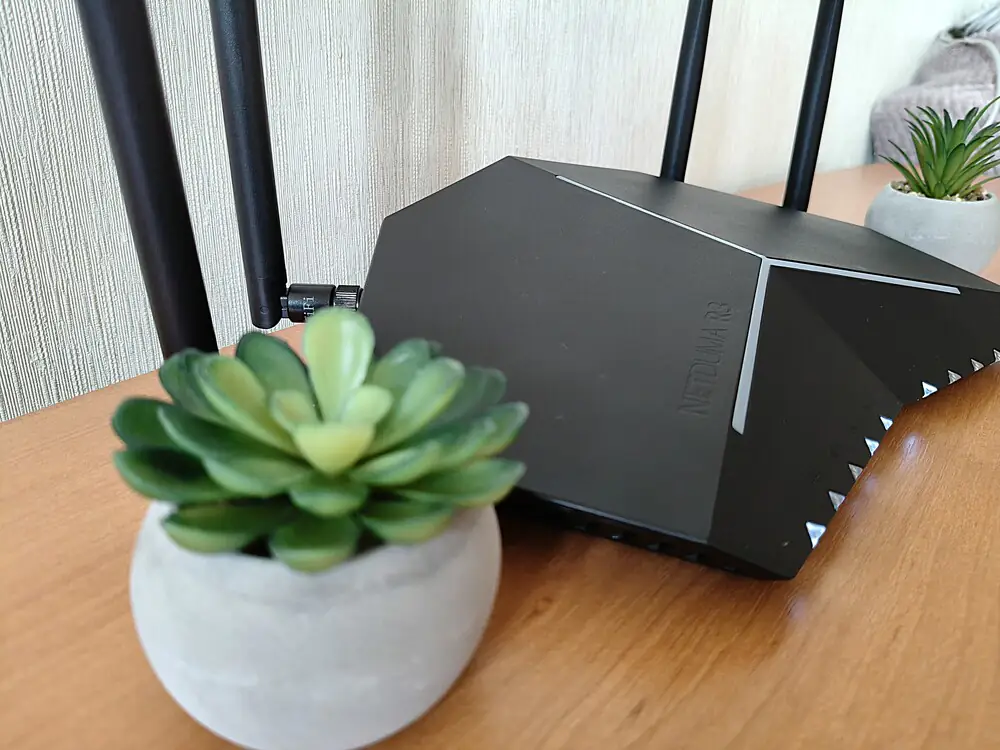
The main processor is supported by 256 MB of DDR3 RAM, which is sufficient for smooth operation and connections. The router also comes with 256 MB of flash memory, providing ample space for firmware updates. There’s even the option to use it as a JFFS partition, allowing us to store software that we install on the device.
The Netduma R3 is a dual-band wireless router with an AX3000 standard. It supports Wi-Fi 6, offering a maximum throughput distribution of 1000 Mbps for the 2.4 GHz band and 2402 Mbps for the 5 GHz band, totaling 3402 Mbps. It’s important to note that these figures are theoretical and may not always reflect the real-world throughput you’ll experience during everyday use.
The Netduma R3 is also backward compatible with older Wi-Fi standards, in case you still have devices using those standards.
As you can see, the “engine” of our Netduma R3 “spaceship” is in excellent shape, and there should be no issues with gaining altitude or speed. So, without further delay, let’s proceed with the pre-launch setup.
Read also: ASUS ROG Rapture GT6 review: Mesh system for gamers
Installation and software
Honestly, I was a bit nervous before starting the initial setup of the Netduma router because I had never used it before. However, as it turned out, the setup process is fairly simple, though it can take quite a bit of time. You’ll understand why later.
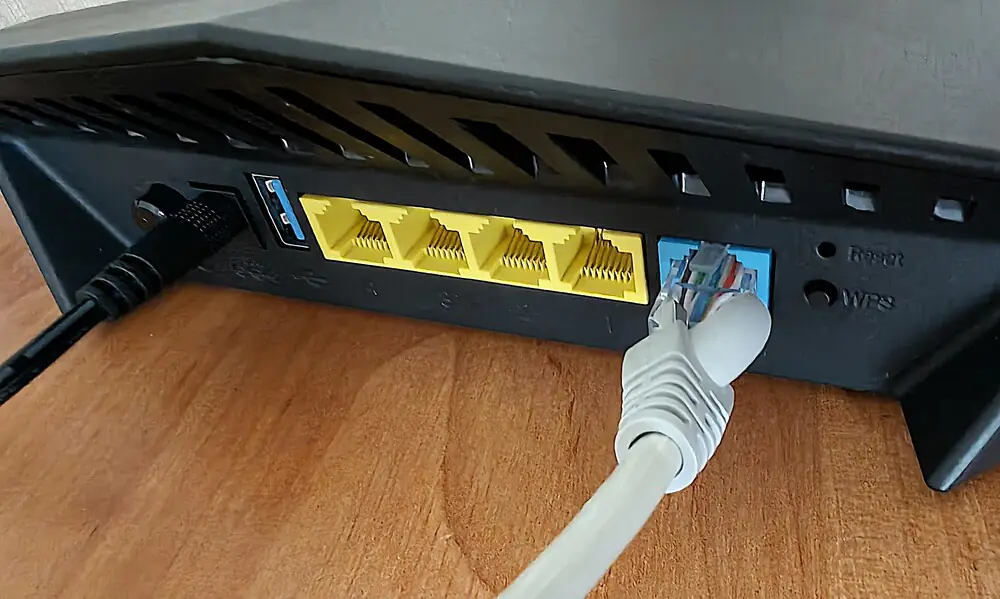
To begin the setup, users can either download the DumaOS app, available for Android and iOS devices, or choose to use the web interface, accessible at http://dumaos/dumaweb. I decided to go with the mobile app for the initial setup.
When you first launch the app, it prompts you to find the new router. After that, you might be asked to update the firmware. I went ahead and did that.

The update process took me at least 10 minutes. This is what I meant earlier — the firmware update took the most time during the setup.
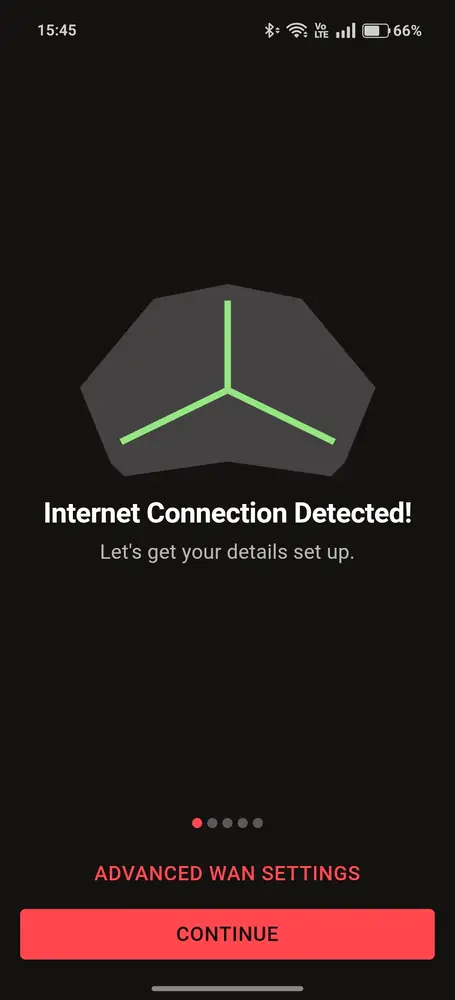
The rest is quite simple. The program will ask you to set up a Wi-Fi name and password.
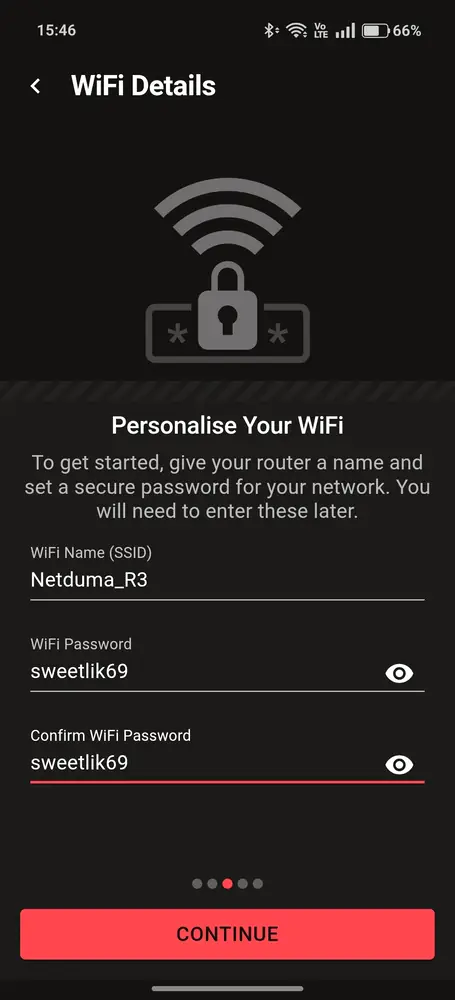
It’s worth noting that the router uses the same SSID for both the 2.4 GHz and 5 GHz bands, which will be convenient for many users. While some prefer to separate these bands, this time, it’s not the case.
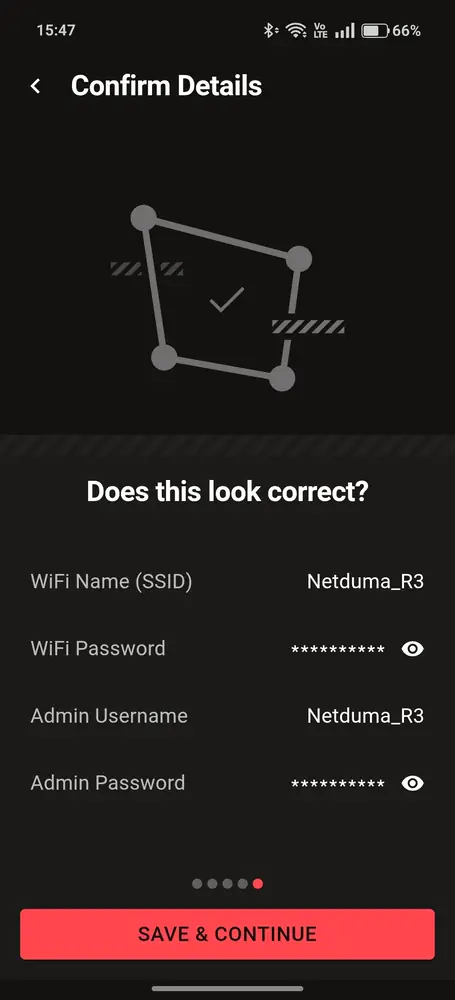
You should also set up the DumaOS admin portal. This will allow you to log into the system and access the web version of the router settings. We’ll discuss those in more detail below.
I was surprised to find the option to check the internet connection speed. As I later realized, this is a key part of the setup, as it allows DumaOS to know your internet speed and optimize the connection accordingly. It’s really convenient and practical.
Many will appreciate the option to optimize the ping, which will make the connection as fast as possible. Honestly, for me, ping optimization isn’t particularly important, but gamers will definitely appreciate it.
Finally, there’s an interesting section for RGB lighting settings. Here, your creativity can run wild, as there are enough modes to transform the Netduma R3 into a true spaceship.
The setup process itself took me no more than 5 minutes. Adding those 10 minutes for the software update, the router was ready to go in just 15 minutes. Can the software update be skipped? Honestly, I’m not sure, but it’s only about 10 minutes of patience, and it’s definitely worth it.
Read also: ASUS ZenWiFi XT9 review: a versatile Mesh system
DumaOS mobile application
Now let’s take a closer look at the DumaOS mobile app. It’s worth noting that the latest version of DumaOS 4, included in the NetDuma R3, brings several significant improvements. The app interface itself is quite simple and intuitive. Even users with little experience will be able to navigate it easily.
Android:
iOS:
After entering the admin login and password, you’ll be directed to the app’s Home page. This acts as the control center for managing the router, where you’ll find all the essential real-time information about your activity.
Here, you can see your router’s download speed, view connected devices, optimize ping, change the router’s name and password, and even adjust the RGB lighting. However, I was more interested in the other settings, as they offer more value.
GeoFilter 2.0
This updated feature will be particularly interesting for gamers, as it allows you to select specific game servers or block others. It’s especially useful for ensuring a smoother gaming experience in competitive games.

Those who play Call of Duty or Overwatch 2 will especially appreciate this feature. However, Geo-Filter 2.0 doesn’t work with all modern games, so it’s worth checking compatibility before using it.
Ping Heatmap
Gamers can also find the best servers for their game based on ping data. This will come in handy before choosing a geofilter. It’s an interesting solution. I tried it in Call of Duty and it works really well.
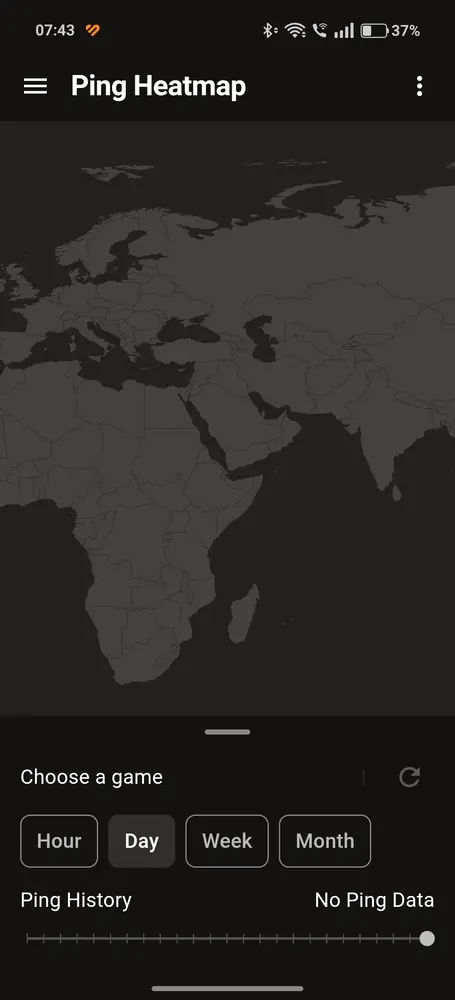
SmartBOOST
Another feature is SmartBOOST, which dynamically adjusts bandwidth allocation to prioritize network traffic for applications that need it most.
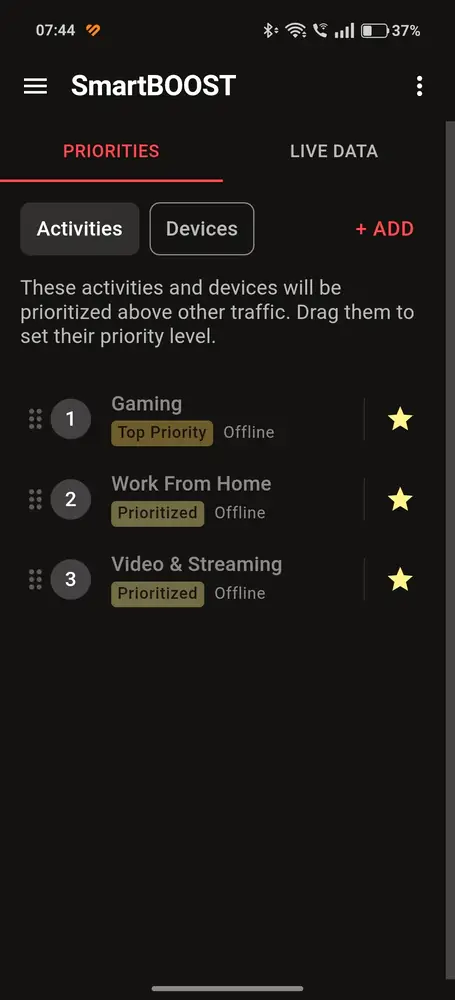
This feature effectively prevents lag or buffering, even when the network is heavily used, such as during simultaneous gaming and media streaming. SmartBOOST delivers on its promise by prioritizing game data packets, ensuring a smooth gaming experience without compromising other network activities.
Ping optimizer
It helps enhance your gaming experience by managing the bandwidth allocated to games, keeping your connection stable and fast. While this feature is useful, it’s not necessarily groundbreaking.

Similar benefits can be achieved through Quality of Service (QoS) settings available on many other gaming routers. Nevertheless, the user-friendly DumaOS interface makes this feature accessible, even for less experienced users.
Speed test
We’re all used to third-party network speed testers, but the NetDuma R3 has a built-in one. It’s very straightforward—just start the test and check your internet speed.
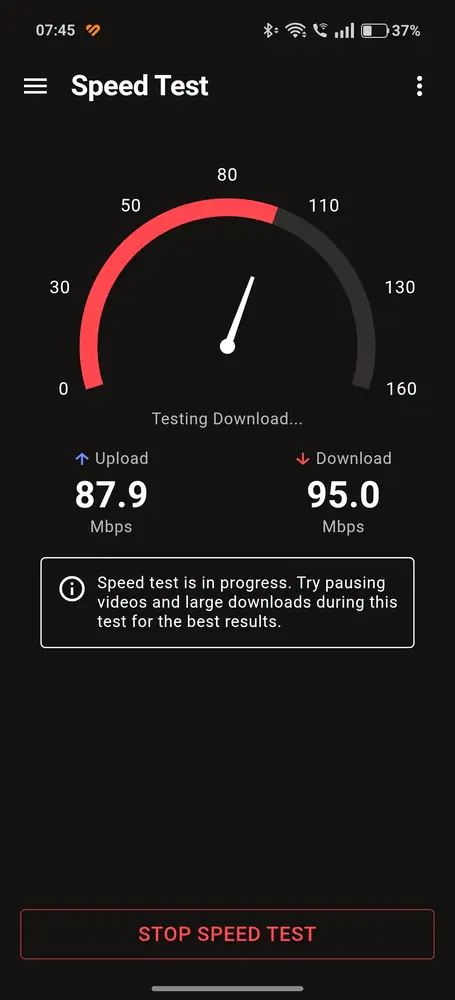
This helps the router select the best network settings. If needed, you can also view past speed test results.
Network activity and device management
The “Network Activity” feature provides detailed information on how bandwidth is being used across the network, making it easy to identify devices or applications that are consuming excessive data.
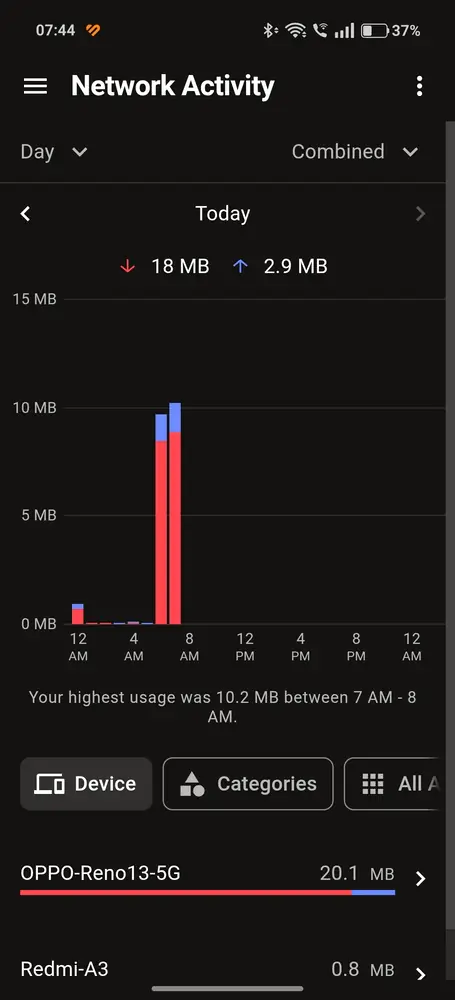
The Device Manager offers a visual representation of the network, allowing you to easily identify and manage devices connected to the router.

In simple terms, you can see which devices are connected to your router. If needed, you can disconnect any unfamiliar or unnecessary gadgets.
AdBlocker and Hybrid VPN
The AdBlocker feature allows the router to block ads and malware for all connected devices, including those that typically don’t have ad-blocking capabilities, such as smart TVs and gaming consoles.
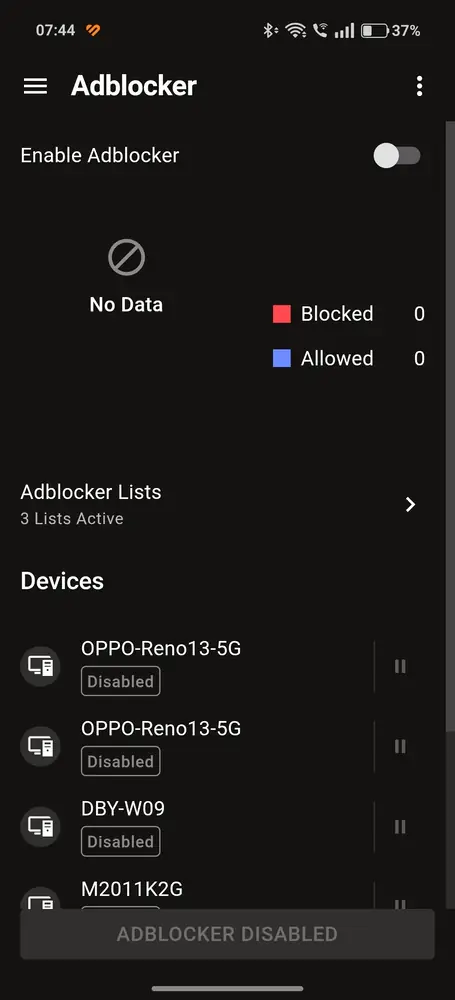
The built-in Hybrid VPN feature allows selective VPN usage, meaning users can route specific devices or applications through the VPN without affecting the entire network.
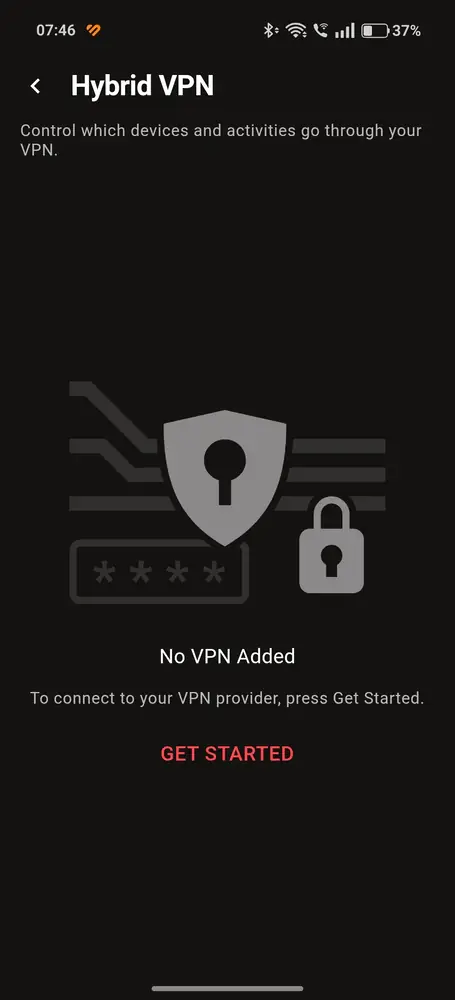
While these features are a welcome addition, it’s important to note that standalone ad blockers and VPN configurations offer more comprehensive protection and functionality. However, integrating these features into the router can be convenient, especially for those who prefer not to set them up separately.
General settings
If you want to review all network settings in detail, head to the last menu item. Here, you’ll have access to all the usual settings, such as LAN, WAN, DHCP, port forwarding, and static routes. Additional features include configuring guest Wi-Fi, controlling RGB lighting, changing the portal’s appearance, and setting up internet rules.
This will be of interest to more experienced users. However, for the average user, I would recommend occasionally checking here to see if there are any router firmware updates.
Overall, I was left with a positive impression of the DumaOS app. I was concerned it might be overly complicated or cluttered with excessive settings, but on the contrary, everything is simple and intuitive.
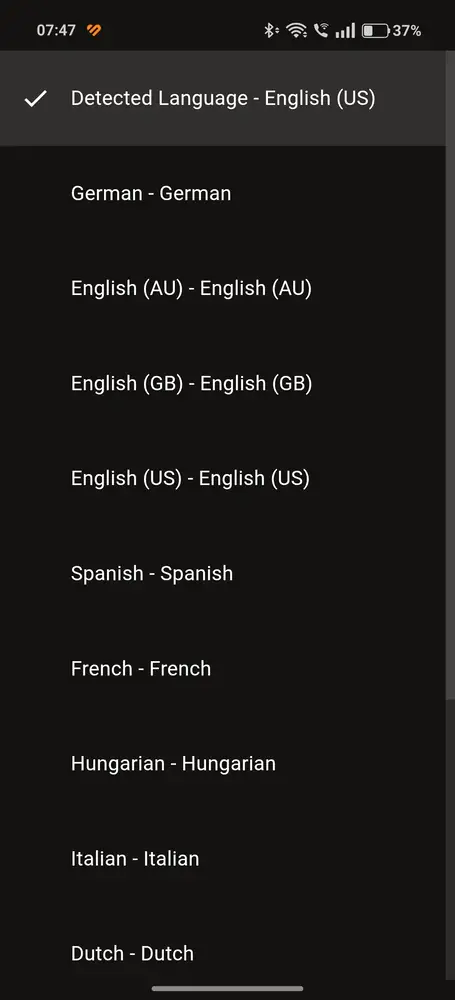
It might be inconvenient for some users that there is no Ukrainian language option for the interface. This could indeed pose an issue for certain users.
Netduma R3 web interface
To be honest, I expected the web interface to offer more detailed options for configuring the router’s functionality, allowing deeper exploration of the fine-tuned settings. However, it turns out that it’s essentially the same DumaOS 4, just for PC. So, there’s nothing particularly special that would warrant separate consideration. Access to the web interface can be found via this link.
I’ll leave some screenshots so you can verify the accuracy of my statements yourself.
Read also: ASUS ROG Rapture GT-AXE16000 review: router for the most demanding users
Does Netduma R3 cope with its tasks?
This is the question that interested me the most from the first day of testing. The technical specifications and features of the NetDuma R3 suggested that there should be no issues. Its quad-core processor and support for modern technologies, including Wi-Fi 6, are capable of providing not only a stable Wi-Fi network but also impressive performance. It’s safe to say that this is a modern router that shouldn’t disappoint the user. But that’s on paper, and I wanted to verify everything myself and make sure.
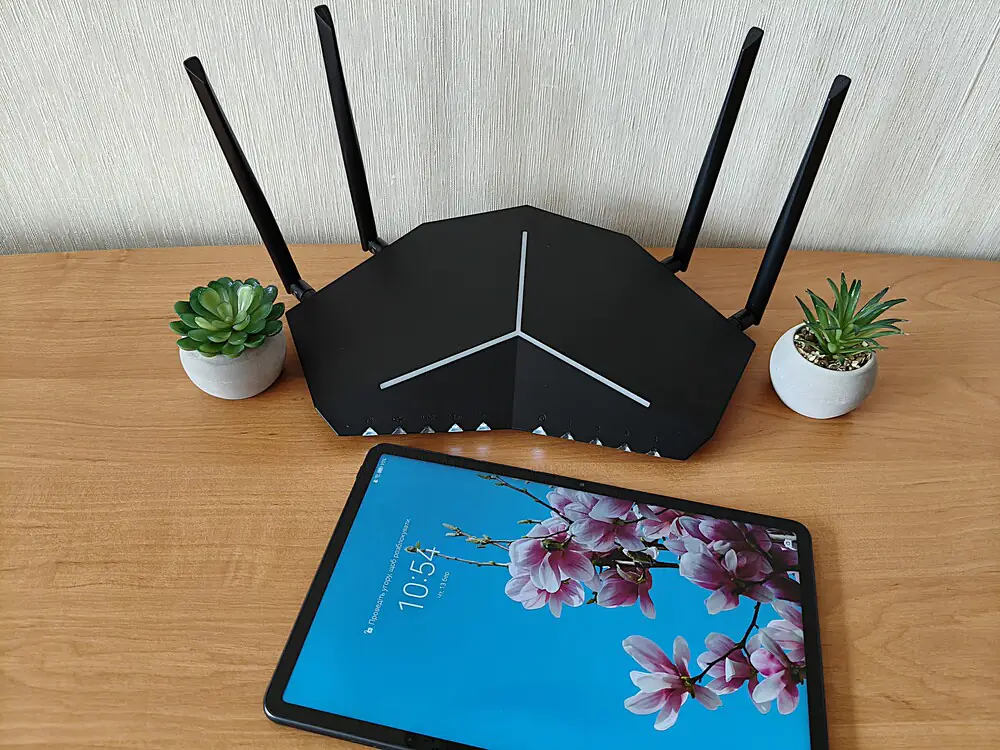
Residents of large cities don’t need an explanation of what a high-rise building is, with its concrete walls, ceilings, and numerous obstacles for signals. In my building, almost every apartment has a router, which adds extra strain on the airwaves. However, the device tested from NetDuma showed impressive performance and handled the tasks at hand effectively.
The NetDuma R3 performed almost flawlessly, fully confirming its reputation as a gaming router. During two weeks of use, there was never a need for a reboot or troubleshooting issues – it simply did its job. It’s clear that modern networking equipment has been installed in the apartment, capable of reliably providing stable internet for a large number of devices – from smartphones and laptops to a 4K TV.
There were no issues with the wired connection. It provided the exact speeds promised by my provider. Everything was stable and consistent here.
If you’ve read my previous router reviews, you’ll remember that I like to test them by selecting five measurement points located in the following areas:
- 1 meter from Netduma R3 (in the same room)
- 5 meters from Netduma R3 (with 2 walls in the way)
- 10 meters from Netduma R3 (with 2 walls in the way)
- 15 meters from Netduma R3 (with 3 walls in the way)
- on the stairs 20 meters from Netduma R3 (with 3 walls in the way).
The tests speak for themselves. I encountered virtually no issues with the Wi-Fi connection. There were no “dead zones” in my apartment. Interference was eliminated, and the signal seemed to effortlessly penetrate the walls. The performance of the 5 GHz network in this scenario used almost the full potential of the gigabit LAN port (the bottleneck syndrome), and I was curious to see how this bandwidth would behave if freed up.
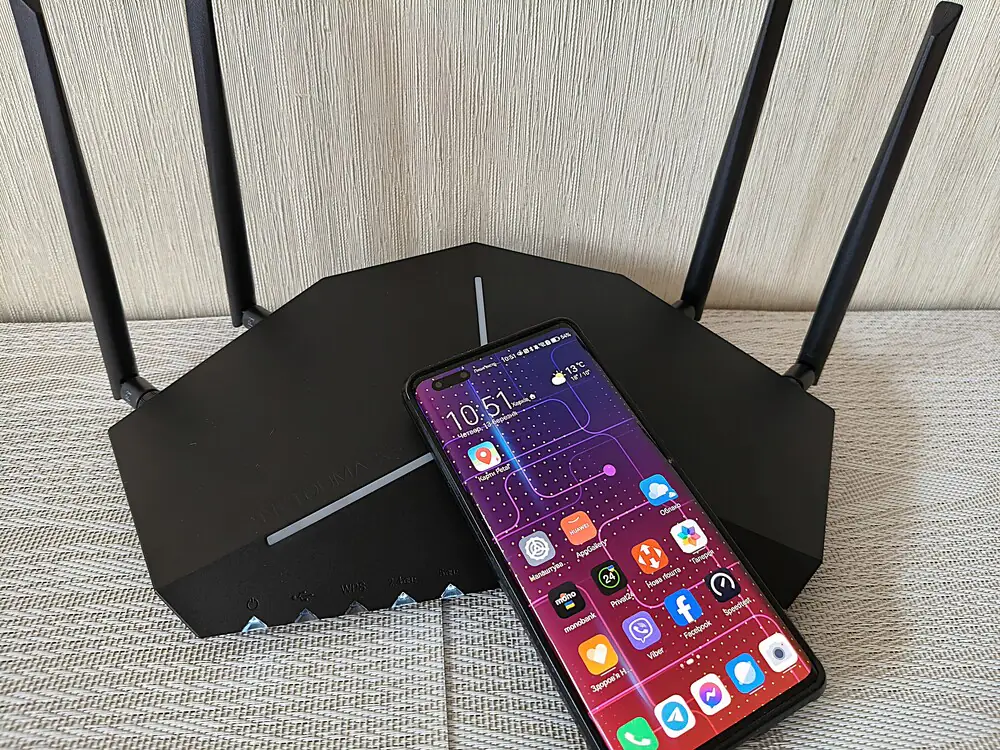
The results for 2.4 GHz are also good, as the performance here is among the best you can get in this range, only falling behind the very expensive high-end models.
I also made sure to check the performance of FTP transfers over the USB 3.0 port. The results were quite decent, indicating that you can use it for a NAS (Network-Attached Storage) setup.
Read also: ASUS ZenWiFi Pro ET12 Review: Powerful Mesh System
Power consumption and heating
The Netduma R3 consumes 5.6 W when idle, which is an average result. Under load, the situation is similar, with the device consuming just over 12 W. In other words, a device running 24/7 throughout the year won’t be a noticeable burden on your household budget.
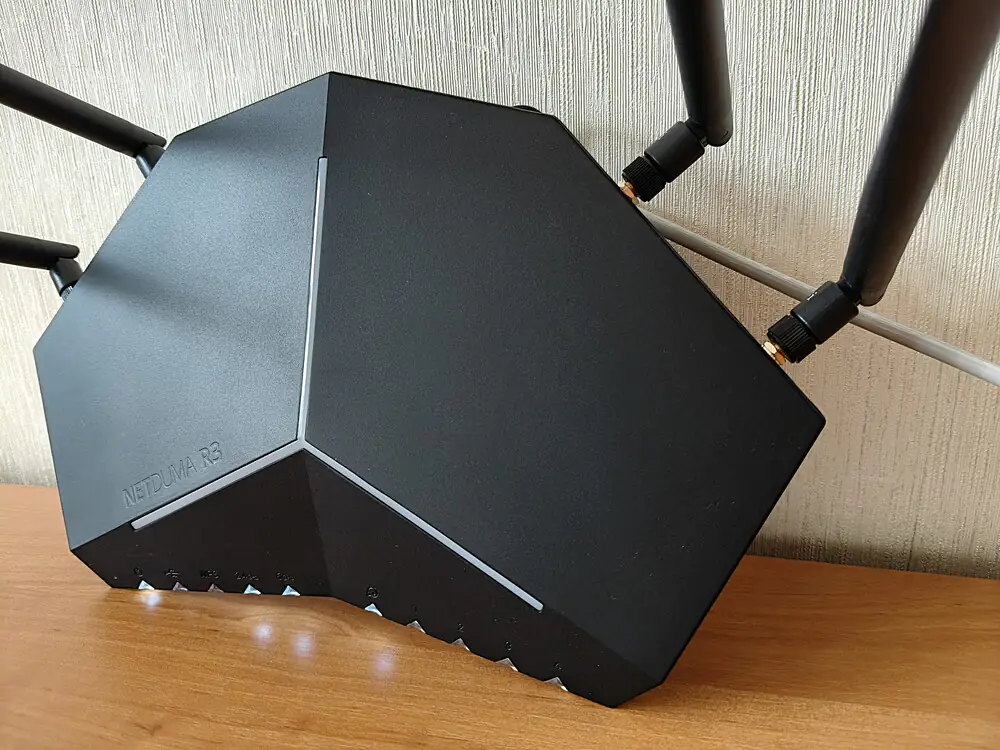
The Netduma R3 uses passive cooling, meaning heat dissipation from the components happens through ventilation openings. However, even under load, the Netduma remained cool. There was no noticeable heating, which is a good sign of efficient thermal management.
Read also: Review of ASUS ZenScreen Touch MB16AHT Portable Monitor
Is it worth buying Netduma R3
Absolutely, the primary audience for this series of routers is undoubtedly gamers looking for a powerful device with an appealing, and perhaps unconventional, design. The Netduma R3 caters to their need for high performance and low latency, making it ideal for competitive gaming.
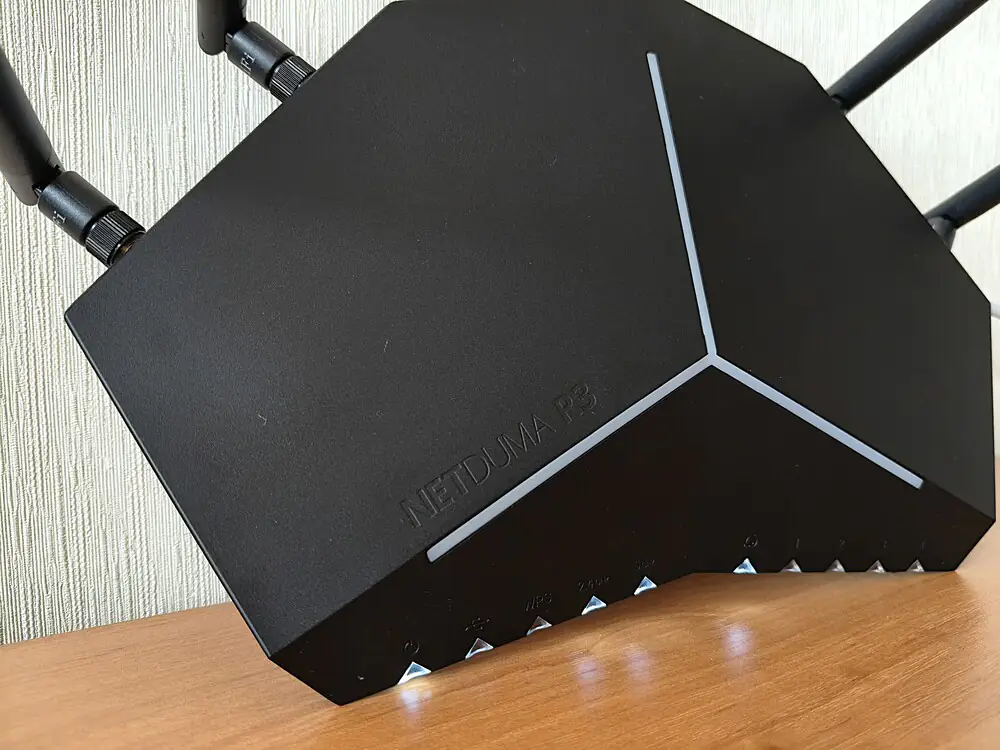
You’ve made a valid point. While the Netduma R3 performs exceptionally well for its intended audience, the lack of clear separation between the 2.4 GHz and 5 GHz bands could potentially lead to mixed results, especially in terms of download speeds. This could be a key area for improvement. Additionally, the lack of antenna labeling could slightly detract from the premium feel that some users might expect from a device at this level. Nonetheless, these drawbacks don’t overshadow the overall performance and functionality of the router, which remains top-notch for gaming and high-performance use.
NetDuma R3, with its advanced DUMAOS 4 operating system, stands out as a powerful contender in the gaming router market. Thanks to its user-friendly interface and innovative features like GeoFilter 2.0, SmartBOOST, and Ping optimizer, it is perfectly suited for gamers seeking a stable and fast connection. The integration of Wi-Fi 6 technology ensures improved coverage up to 20 meters and high speeds, essential for seamless gaming and real-time efficiency. These aspects make it an excellent choice for gamers looking for a high-performance and reliable networking solution.
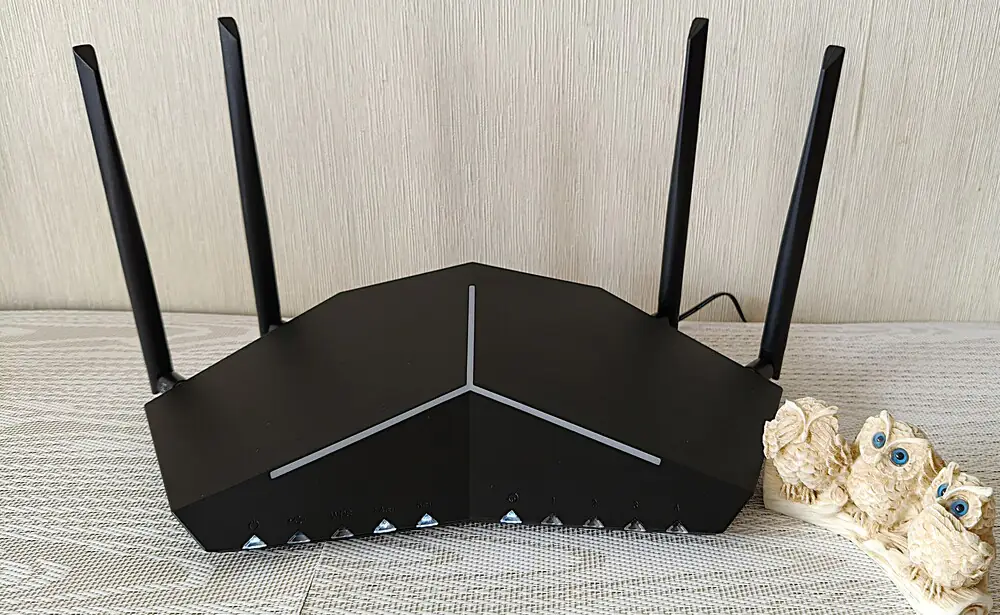
Netduma R3 is a reliable, high-quality gaming router that performs excellently in various scenarios. It is perfectly suited for gaming and other activities that demand top-level Wi-Fi performance. If you’re looking for a high-performance dual-band router with extensive configuration options and gaming features, the Netduma R3 is definitely worth considering. It’s a great investment, and it lives up to its value with every euro spent.
Read also:
- Why Quantum Dot Displays Stand Out: The Case of Samsung
- Use It or Lose It: How AI is Changing Human Thinking
Where to buy



